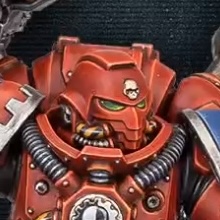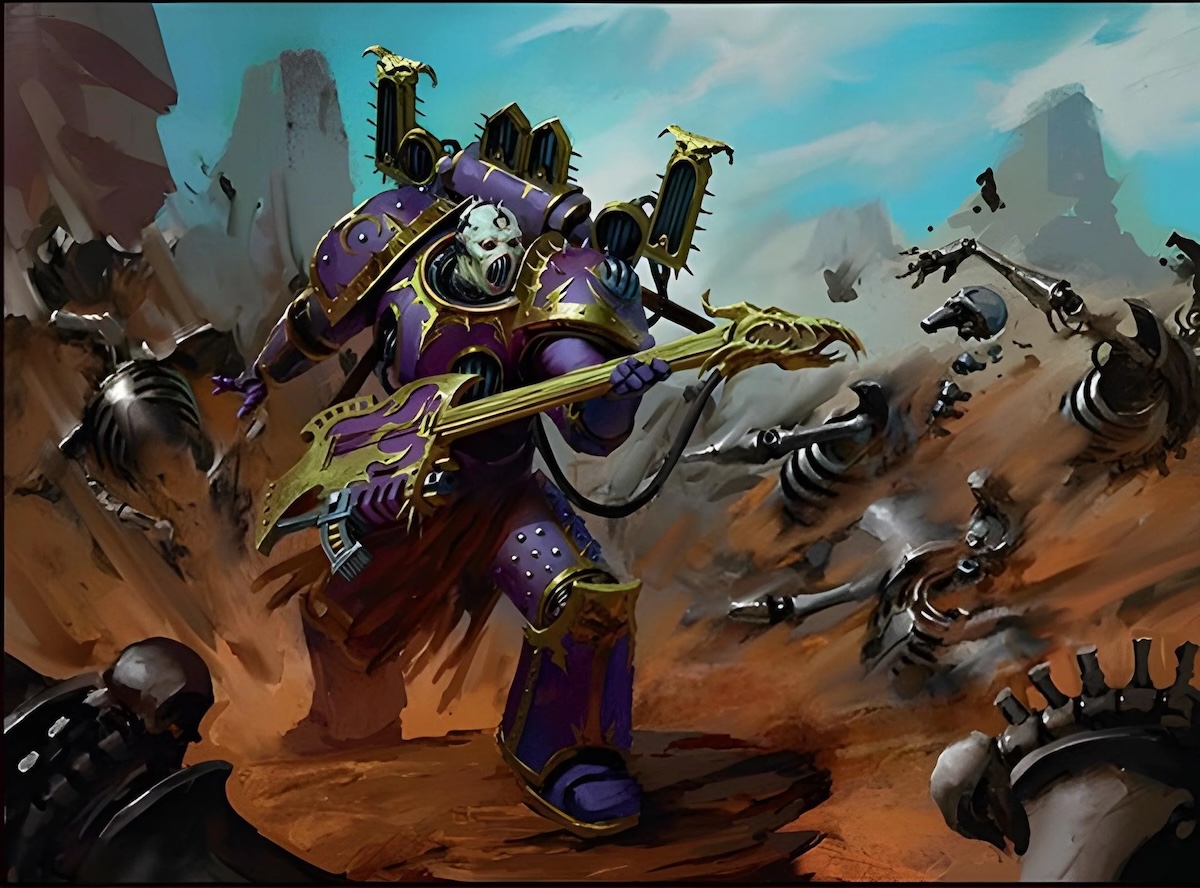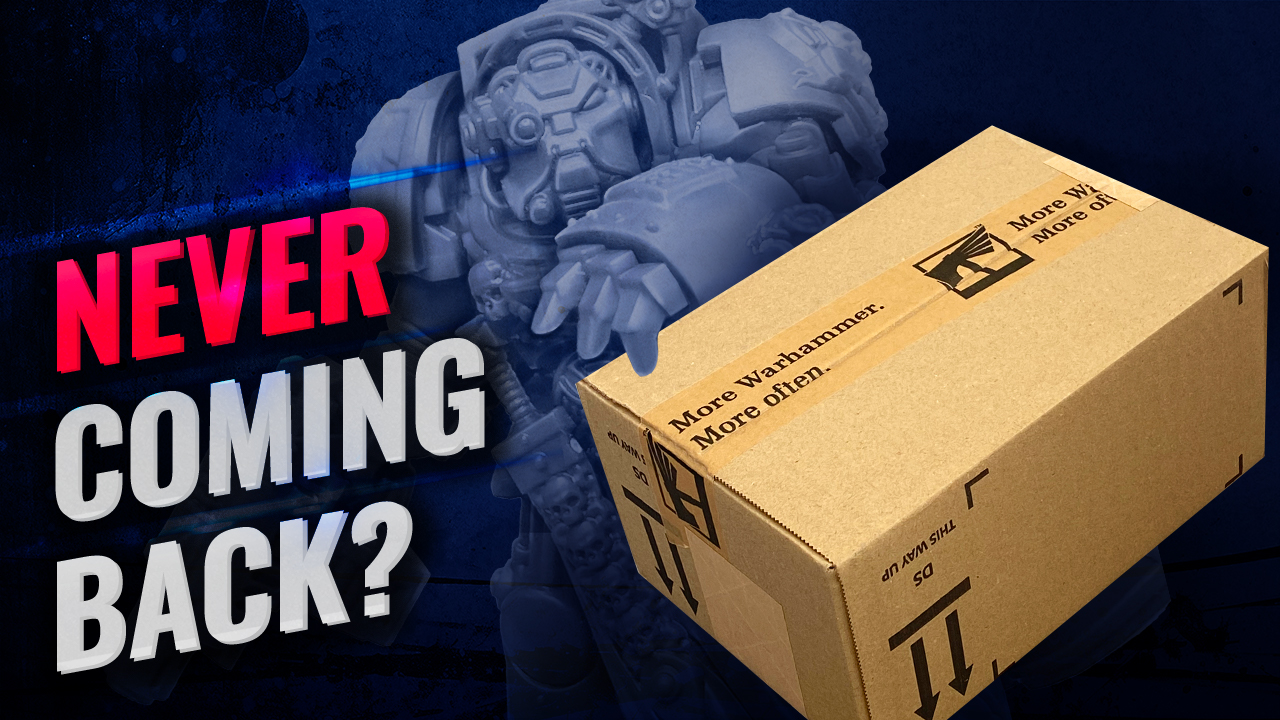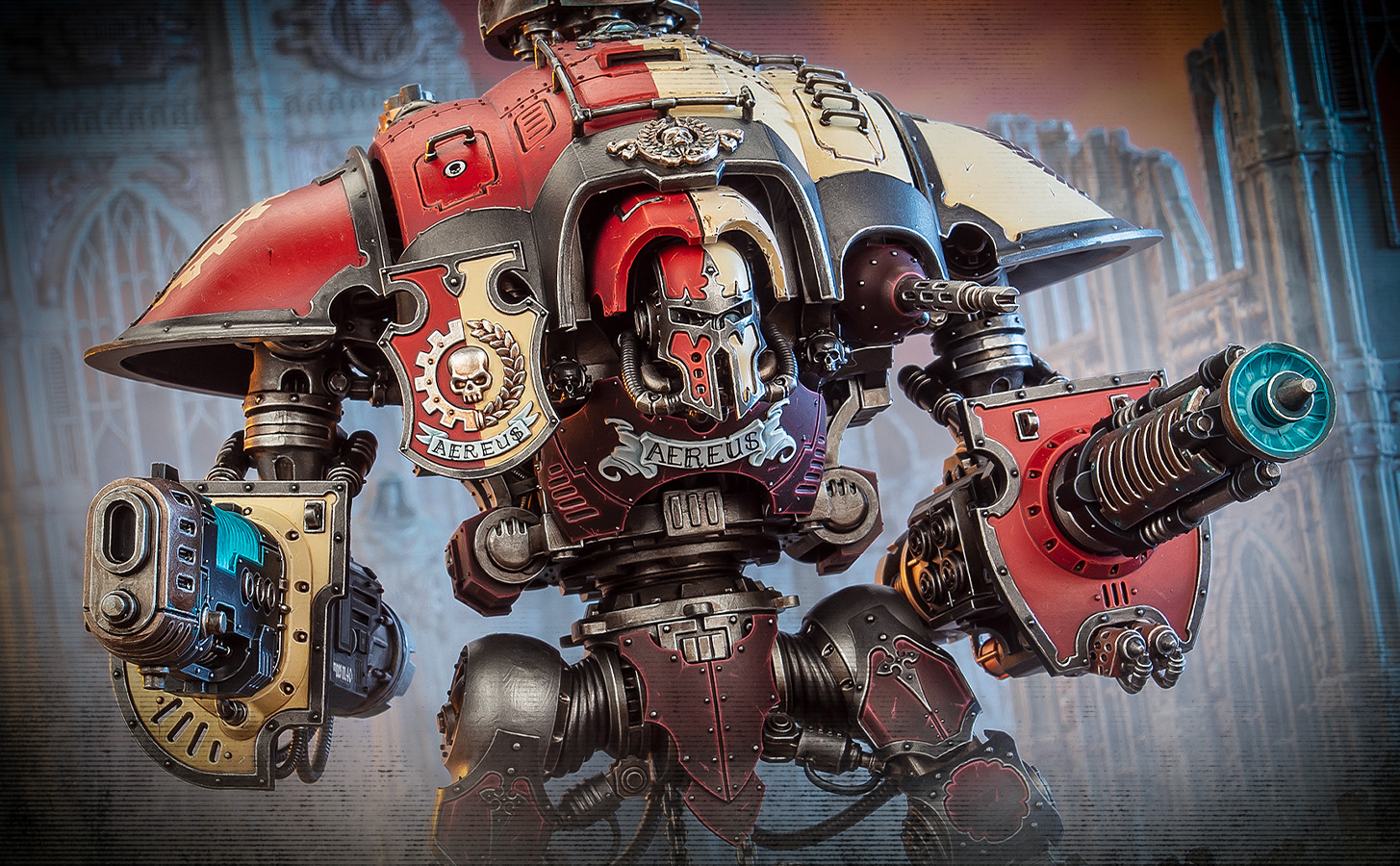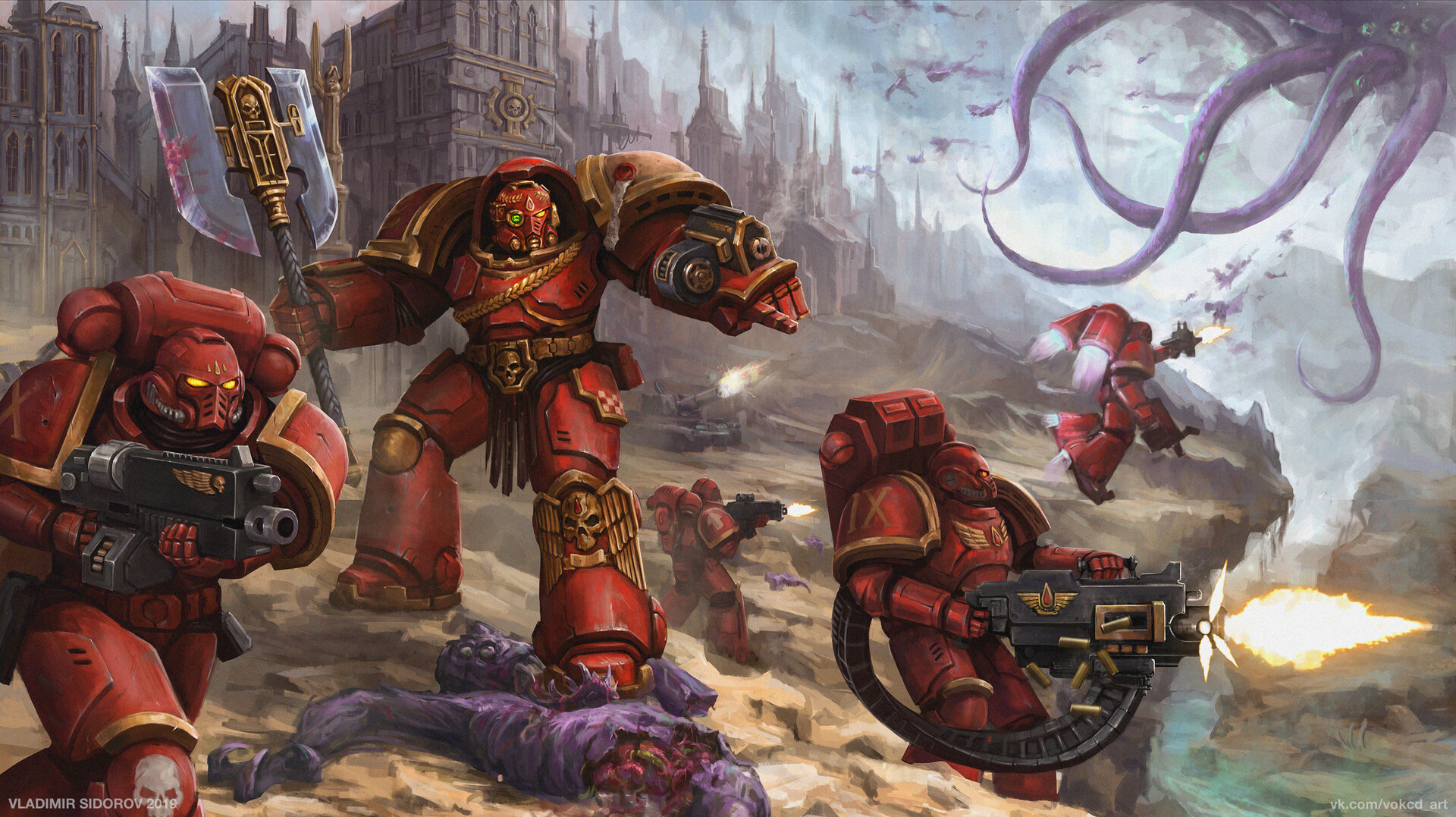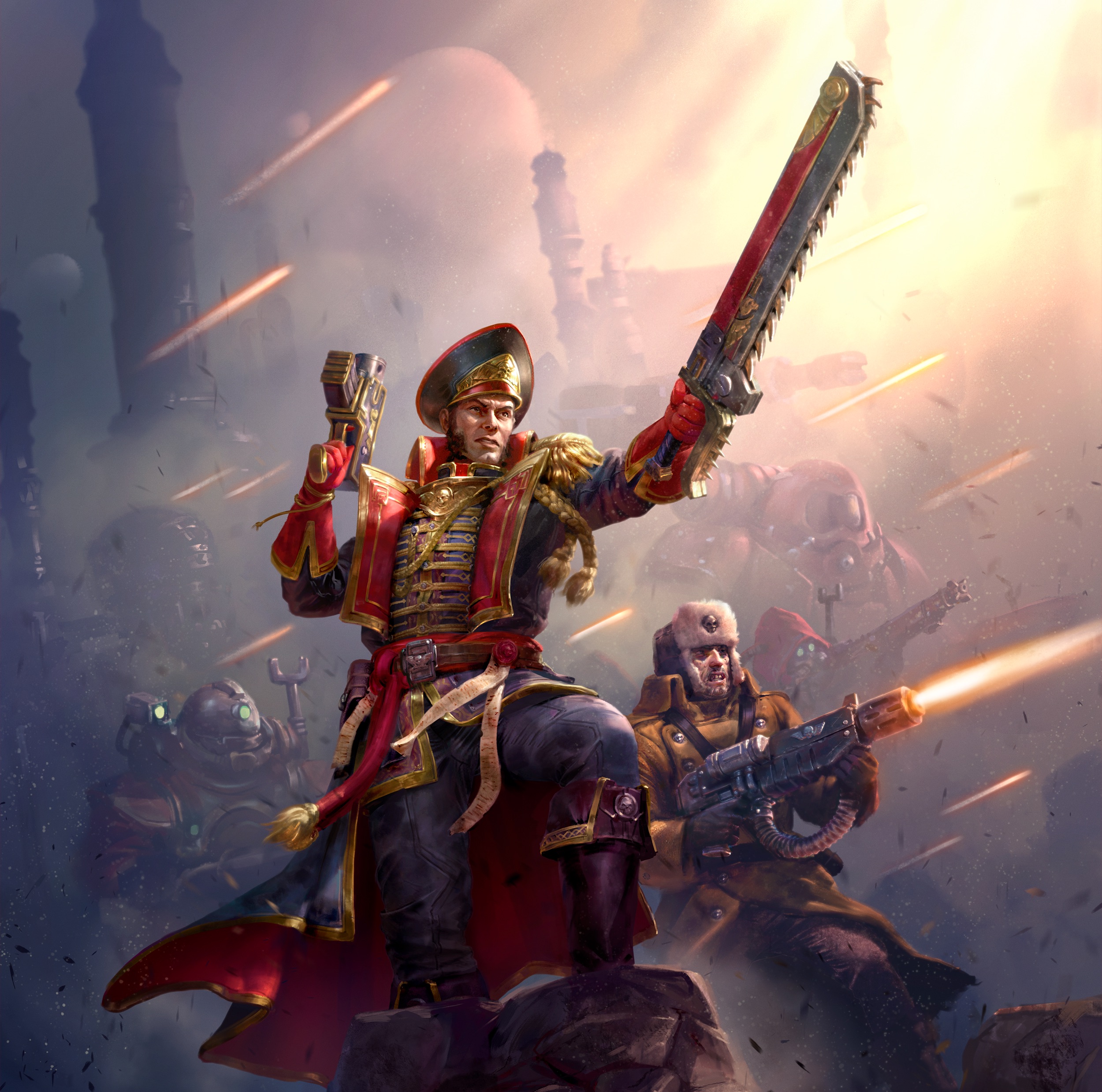Warhammer 40,000 has spawned countless video games, ranging from real-time strategy epics to visceral action shooters. Below we rank the most popular Warhammer 40K games on PC, considering both player reception (Steam charts, user reviews, community engagement) and critical reception (Metacritic scores, media reviews). This list blends classic titles like Dawn of War with modern hits like Space Marine 2 for a comprehensive overview of the best 40K experiences.

1. Warhammer 40,000: Space Marine 2 (2024)
Developer: Saber Interactive – Publisher: Focus Entertainment
A modern blockbuster in the Warhammer universe, Space Marine 2 is a third-person action shooter that had fans buzzing with anticipation for over a decade. It’s the sequel to 2011’s Space Marine and it launched to massive success – within weeks it sold around 4.5 million copies and broke player count records for 40K games, peaking at 134,000+ concurrent players on Steam at launch.
This explosive debut marked Space Marine 2 as one of the most popular Warhammer titles ever right out of the gate. The game puts you back in the ceramite boots of Ultramarine Captain Titus, now facing a galactic menace of Tyranids (extraterrestrial hive aliens) in an all-out battle for humanity’s survival.
Built on Saber’s modern graphics engine, Space Marine 2 delivers an “exceptional, larger-than-life shooter” experience. Gameplay seamlessly blends chainsword melee and bolter gunplay, staying true to the original’s formula of no-cover, all-out combat. As a genetically engineered super-soldier, you don’t take cover – you are the cover. Health is regained by executing enemies in gory finishers, encouraging a relentless offensive playstyle just like its predecessor.
The scale of battles is even bigger this time around: Titus and his brothers wade through hordes of Tyranids in sprawling warzones, from defending besieged hive cities to boarding enormous alien bio-ships. Set pieces are bombastic, capturing the epic scope of the 41st millennium’s wars. The game’s slick combat, huge enemy counts, and polished visuals had reviewers raving that it “raises the bar for all Warhammer adaptations”.
One major addition is cooperative play – Space Marine 2 features a 3-player co-op mode where you and friends can team up as Space Marines to slay hordes together. Each player can choose from different Marine classes with unique weapons and abilities, adding replayability and squad tactics to the mix.
There’s also a competitive multiplayer component (3v3 PvP modes pitting Space Marines vs Chaos Marines in team battles), extending the game’s life for those who want to test their skills against other players. These new modes build on the strong core gameplay to offer a fuller package than the original game.
Warhammer 40,000: Space Marine 2 Reception & Impact
Critics and fans alike lauded Space Marine 2. It scored in the low-to-mid 80s on Metacritic, with particular praise for how it nailed the Space Marine power fantasy on a grander scale. The consensus was that it “outstrips the 2011 original in most ways” while maintaining the visceral thrill that made the first game beloved. The success of Space Marine 2 is seen as a breakthrough for Warhammer in mainstream gaming – Games Workshop’s CEO even noted that such big hits “are not a given” for Warhammer, and they’re “looking for the next one” to continue that momentum.
In other words, this sequel proved a Warhammer title can be a top-tier blockbuster. With Space Marine 3 already being teased in the wake of its success, Space Marine 2 has kicked open the door for more high-profile 40K games. Its record sales and player engagement solidify it as not just a great 40K game, but one of the most significant releases in the franchise’s history.

2. Warhammer 40,000: Dawn of War (2004)
Developer: Relic Entertainment – Publisher: THQ (now Sega)
Dawn of War is a groundbreaking real-time strategy game that set the standard for Warhammer 40K video games. It drops you into brutal battles as the Blood Ravens Space Marines, fighting Orks, Chaos Marines, and Eldar in a campaign on the war-torn planet Tartarus.
Unlike earlier RTS titles, Dawn of War streamlined base-building and resource gathering – you don’t mine gold or tiberium here. Instead, you capture control points and “kill for resources,” earning requisition by defeating enemies and holding strategic locations. This aggressive take on economy keeps the pace relentless and true to the 40K motto, “There is only war.”
In battles, Dawn of War emphasizes squads and battlefield tactics over tedious micromanagement. Units deploy in squads rather than singly, and you can reinforce or upgrade them on the fly – even teleport in reinforcements directly to squads engaged at the front.
The result is fast, fluid combat with spectacular animations (like sync-kill executions where a Space Marine might impale an Ork) amidst a “glorious mess of lasers and explosions,” capturing the grimdark carnage of the 41st millennium. As armies clash, you’ll field tanks and towering Dreadnought walkers that can literally pick up enemies and hurl them aside, delivering the over-the-top spectacle Warhammer fans crave.
Story-wise, the base game’s campaign follows Captain Gabriel Angelos through a narrative full of twists (the ending reveals a hidden Chaos plot), and later expansions broadened the scope. Winter Assault introduced the Imperial Guard, while Dark Crusade added a risk-style conquest campaign with eight factions vying for control of a planet – you can even return to previously won territories to find your fortifications still in place. A final expansion, Soulstorm, brought aerial units and more races, and it’s kept alive by a passionate modding community – modders have removed unit caps and added entire new factions, turning Dawn of War into the “ultimate 40K game” over time. This long-term community support speaks to the game’s impact on players.
Warhammer 40,000: Dawn of War Reception & Impact
Dawn of War earned widespread critical acclaim (86/100 on Metacritic) and helped popularize Warhammer 40K in gaming. Its cinematic brutality and balanced faction design were praised as a “great piece of entertainment” that “kicked ass” at bringing Warhammer to life. Commercially it was a hit, shipping over 4 million copies (including expansions) by 2009.
More importantly, it became a cornerstone of the 40K community – many fans cite it as their introduction to the universe’s lore and epic scale. Nearly two decades later, Dawn of War is fondly remembered and often still played with mods, proving its enduring popularity. In combining faithful Warhammer atmosphere with accessible yet deep strategy, Dawn of War established itself as the quintessential 40K game, and it remains the benchmark against which all others are measured.
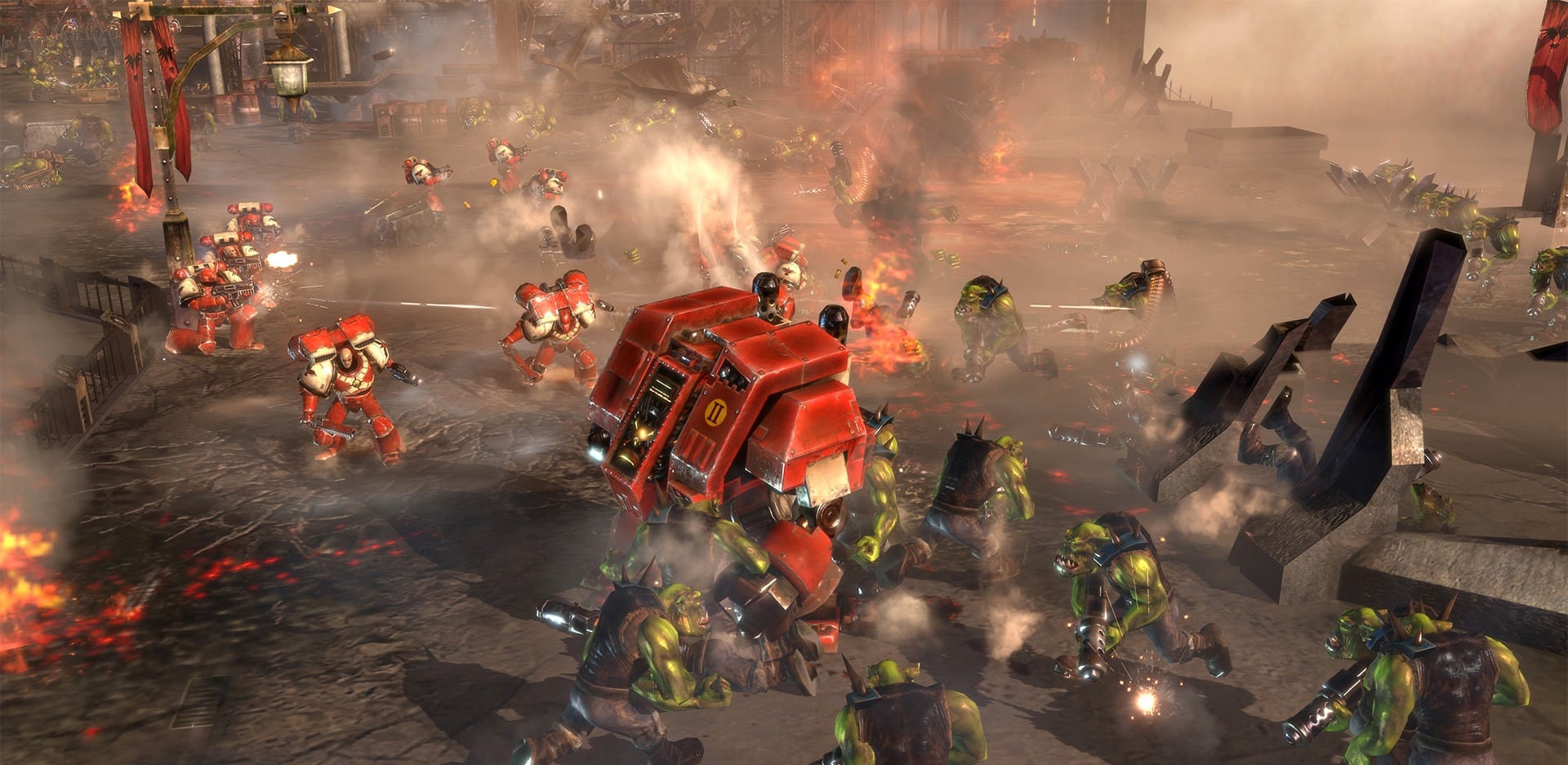
3. Warhammer 40,000: Dawn of War II (2009)
Developer: Relic Entertainment – Publisher: THQ (now Sega)
Dawn of War II took the bold step of reinventing the formula that made the original Dawn of War a hit. Instead of base-building and large armies, this sequel focuses on small-squad, tactical combat – essentially Warhammer 40K meets Diablo and XCOM.
You command an elite strike force of Space Marines (the Blood Ravens Chapter again) through a campaign against Tyranids, Orks, and Chaos, emphasizing tight skirmishes over grand battles. Most missions give you just four badass units (like your Force Commander, a scout squad, a Devastator heavy weapons team, etc.) plus a few expendable support troops.
There are no resources to harvest and no bases to build; instead, you drop pod into each map ready to fight with what you have. The design pushes you to make tactical use of cover, special abilities, and squad synergy rather than overwhelming the enemy with sheer numbers.
Gameplay plays out almost like an action RPG/RTS hybrid. Each squad (or hero) gains experience, levels up, and can be equipped with wargear loot between missions, lending a strong RPG progression element.
In combat, DOW2 encourages aggressive tactics and micromanagement of abilities: for example, you might have your Tactical Marines suppress enemies with bolter fire while your Assault Marines jump-pack over the top to smash into the enemy backline. Meanwhile, your Commander can wade into melee, shouting “For the Emperor!” and drawing fire, as your scout Cyrus sneaks around for a sniper shot or plants explosives.
Using cover is crucial for survival – you’ll park your ranged units behind barricades or ruined walls, and reposition when Tyranid hordes try to flank. The intensity ramps up especially in defensive scenarios, where you must hold out against waves of aliens, making smart use of limited resources and the environment. Not every mission landed perfectly (some boss battles felt bullet-spongy), but at its best Dawn of War II delivers exciting, tight-knit engagements that capture the heroism of Space Marines against overwhelming odds.
The campaign can be played in co-op with a friend (each controlling two squads), which many players enjoyed. After launch, DOW2 also introduced The Last Stand mode – a three-player cooperative survival arena where you fight off increasingly tough waves and level up your hero character.
This mode became a sleeper hit; some fans joked it was so fun it “inspired a whole genre” if only it had been more popular. On the multiplayer front, the game’s shift in scale made competitive matches feel more like tactical hero brawls than traditional RTS. It wasn’t StarCraft, but it offered a very different kind of strategy experience that attracted its own dedicated community.
Warhammer 40,000: Dawn of War II Reception & Impact
Dawn of War II earned a strong critical reception, averaging around 85/100 on Metacritic. Reviewers praised the game’s fast-paced tactical gameplay and impressive graphics/animations that brought the 41st millennium to life. The cinematic kill moves and detailed unit models were frequently highlighted – it was clear Relic put a lot of love into making every Marine, Ork, and Tyranid look and feel authentic.
Some criticism was directed at the relatively small number of maps and the repetitive nature of the campaign missions, but overall the bold design paid off. From a player perspective, DOW2 initially shocked fans of the first game (no base-building?!), yet it ultimately won many of them over by offering a co-op friendly, story-driven Warhammer experience.
The expansions – Chaos Rising (2010) and Retribution (2011) – further boosted its reputation, adding new factions (Chaos Marines, Imperial Guard, etc.) and refining both the campaign and multiplayer. While Dawn of War II didn’t have the same long-tail mod scene as the original, it carved out its own legacy.
To this day, strategy fans debate DOW1 vs DOW2 as they scratch different itches: one is about armies and bases, the other about squads and loot. Together, they gave us two distinct excellent takes on 40K strategy. In this ranking, Dawn of War II earns its high place for daring to innovate and delivering some of the most intense tactical combat in the franchise, all while maintaining the gritty Warhammer flavor that fans adore.
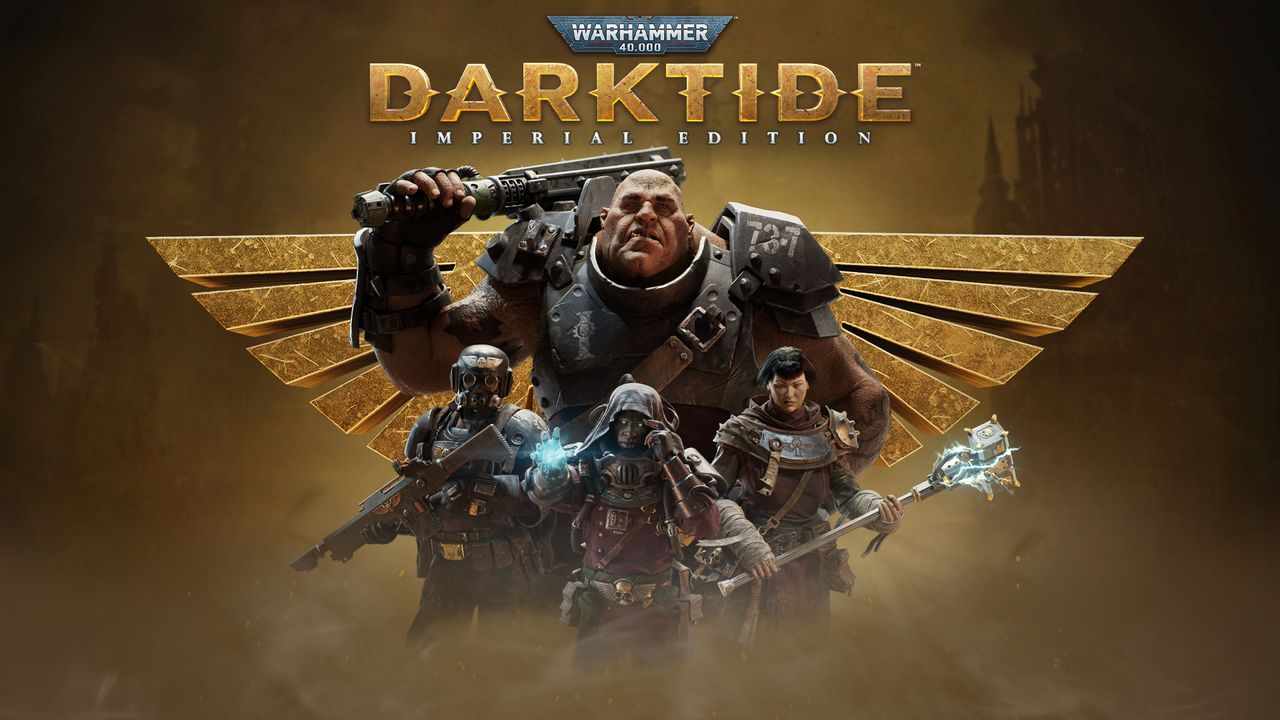
4. Warhammer 40,000: Darktide (2022)
Developer/Publisher: Fatshark
Warhammer 40K: Darktide is a co-operative first-person shooter/slasher that brings the beloved formula of Vermintide (Fatshark’s Warhammer Fantasy co-op game) into the grim darkness of the far future. If you’ve ever imagined Left 4 Dead but set in a 40K hive city, with chainswords and lasguns in hand, Darktide is exactly that.
The game drops a team of four players into the depths of Tertium Hive on the planet Atoma Prime, a sprawling industrial city teetering on the brink of Chaos corruption. You and your fellow rejects – because you play as prisoners turned improvised Inquisition agents – must fight through hordes of deranged cultists, mutants, and daemonic forces to carry out missions for the Imperium. The result is intense PvE carnage that has quickly become a fan-favorite for those craving 40K’s gritty atmosphere in a co-op setting.
Gameplay in Darktide is fast-paced and brutally satisfying. Fatshark is known for top-tier first-person melee combat, and Darktide delivers that in spades – chainswords rev, thunder hammers slam, and enemy limbs fly with every strike. Uniquely, Darktide also emphasizes ranged gunplay much more than its Fantasy predecessor. You’ll wield everything from lasguns and autoguns to iconic boltguns and plasma weapons.
The gunplay has a real weight and kick to it – a headshot with a bolter will literally explode a heretic into red mist, and a rapid-fire burst from a ripper gun (essentially a heavy shotgun) can tear a pack of plague mutants apart. As one reviewer put it, Darktide “adds top-tier shooting” on top of the already excellent melee foundation Fatshark established.
This mix of melee and ranged creates thrilling combat loops: you might unload your magazine into an onrushing horde, then swap to a sword or axe to dispatch those that close the distance. Each of the four classes – Veteran (sharpshooter guardsman), Zealot (fervent melee crusader), Ogryn (massive abhuman brute), and Psyker (warrior-mage who uses psychic powers) – brings unique abilities and playstyles, encouraging team synergy.
Atmosphere is where Darktide truly shines. The game absolutely nails the “feeling” of a 40K hive city. Environments are vast, grimy, and gothic – from cramped maintenance tunnels and factorum complexes to grand plazas covered in skulls and imperial statues, every level oozes detail and oppression. You’ll see endless factories chugging away and imposing cathedrals of industry rising in the smog. Even small touches, like servo-skulls buzzing around or propaganda vox-speakers blaring, add to the immersion.
The enemy design reinforces the horror – the infected hordes of the Chaos cult swarm with unsettling ferocity, and specials like the Poxhound (a diseased mutant dog) or the Daemonhost can wipe an unwary team. All of this is underscored by Jesper Kyd’s soundtrack that mixes industrial metal with choir chants to create a tense, dark mood.
Simply put, Darktide makes you feel like a tiny cog in the giant, decaying machine of the Imperium, fighting desperately to survive. It is “so 40K it hurts (in a good way),” packing in details like purity seals on even in-game soda bottles.
Warhammer 40,000: Darktide Reception & Community
Upon release, Darktide was praised for its core gameplay – as expected, the moment-to-moment combat and audiovisual presentation are phenomenal. Many players and reviewers noted that “actually playing those missions is an absolute blast”, delivering some of the best melee and gunplay in the co-op genre.
However, it also faced criticism for its progression systems and technical issues. As a “live service” style game, some felt it launched light on content and had a grindy structure. Fatshark acknowledged these issues and delayed the Xbox launch to focus on improving the PC version’s quality of life.
Despite these early criticisms (reflected in a mixed Steam user score at first), Darktide built a devoted player base thanks to its addictive combat and the appeal of the 40K setting. It had a huge surge of players at launch – over 100k concurrent players on Steam, showing the hunger for a 40K co-op experience – and while numbers dipped after release, updates and patches have steadily won back players.
For many Warhammer fans, Darktide is a dream realized: it’s the first game to truly depict the life of the common Imperial underclass in a hive city, as opposed to power-armored Space Marines. The dialogue between characters (written with input from author Dan Abnett) is rich with lore tidbits and gallows humor, and it strengthens that sense of being an actual person in the 40K universe – something few games attempt.
Looking at the broader impact, Darktide has become a mainstay in the coop shooter space. It’s often compared alongside games like Left 4 Dead, Back 4 Blood, and Deep Rock Galactic, but with a uniquely Warhammer twist that sets it apart. With continued support, additional content, and the possibility of new classes or missions, fans are optimistic Darktide will only get better. Even with its bumps, it’s indisputably one of the most popular 40K games in recent years, simply because of how excellently it brings 40K’s grimdark combat to life with friends.

5. Warhammer 40,000: Rogue Trader (2023)
Developer: Owlcat Games – Publisher: Owlcat Games
Warhammer 40,000: Rogue Trader is a narrative-rich, classic-style CRPG (Computer Role-Playing Game) developed by Owlcat Games, best known for the Pathfinder: Kingmaker and Wrath of the Righteous RPGs. Released in December 2023, Rogue Trader marks the first-ever officially licensed Warhammer 40K CRPG, immersing players into the intriguing and dangerous life of a Rogue Trader—a powerful explorer, merchant, and warlord endowed with authority to chart unknown stars, exploit worlds, and bring back wealth to the Imperium.
Players step into the shoes of a newly appointed Rogue Trader, leading a crew of diverse companions aboard their flagship, the Von Valancius. The narrative-driven campaign explores the mysterious Koronus Expanse, a frontier region brimming with lost civilizations, rival factions, xenos threats, and hidden secrets. Decision-making is paramount, as your choices shape the galaxy’s fate—will you be a ruthless conqueror, an opportunistic merchant, or a diplomat forging fragile alliances?
Gameplay centers around classic turn-based tactical combat reminiscent of beloved CRPGs like Divinity: Original Sin and Baldur’s Gate 3. Players build a party of unique companions, each with distinctive personalities, skills, and story arcs deeply embedded in Warhammer 40K lore.
Your crew includes loyal Imperial servants, enigmatic psykers, xenos allies, and rogue warriors, each contributing strategically both in combat and narrative encounters. Battles require tactical positioning, leveraging cover, managing resources like action points and psychic powers, and adapting dynamically to enemy tactics, providing depth and replayability.
Exploration is equally vital—players manage the Von Valancius, upgrading its systems, recruiting new crewmembers, and deciding the course of their voyage across the expanse. Strategic decisions aboard your ship impact your journey, with choices influencing resource availability, diplomatic standing with factions such as the Ecclesiarchy, Mechanicus, and even alien empires, as well as unlocking new missions and storylines.
Narratively, Rogue Trader shines by offering complex moral dilemmas fitting the grimdark setting. You confront Chaos incursions, Drukhari raiders, Ork warbands, and more, always forced to balance Imperial law against personal ambition or survival. The deep writing and character interactions, supported by meaningful branching paths, ensure every playthrough feels unique.
Warhammer 40,000: Rogue Trader Reception & Impact
Upon release, Rogue Trader received widespread acclaim from both critics and the Warhammer community, praised for faithfully capturing the essence of Warhammer 40K lore while delivering a compelling RPG experience. With an average score in the mid-80s on Metacritic, reviewers particularly highlighted its immersive storytelling, deep tactical combat, and well-realized characters.
The game quickly gained a strong fanbase among both RPG enthusiasts and Warhammer devotees, establishing itself as a significant new pillar in Warhammer 40K gaming. Its success also sparked discussions about future expansions, DLCs, or even sequels exploring different regions of the galaxy or deeper narrative threads introduced in the base game.
Ultimately, Warhammer 40,000: Rogue Trader marks a major milestone, proving that the grimdark universe can thrive within the CRPG genre, offering rich storytelling, tactical depth, and expansive player choice. It’s a standout entry in the Warhammer gaming catalog, sure to be celebrated by both seasoned fans and newcomers for years to come.

6. Warhammer 40,000: Mechanicus (2018)
Developer: Bulwark Studios – Publisher: Kasedo Games
Warhammer 40,000: Mechanicus is a standout turn-based strategy game that puts a spotlight on a faction usually relegated to the background: the Adeptus Mechanicus. These are the cybernetically augmented priest-engineers of the Imperium who worship the Machine God, and Mechanicus lets you command them on a quest for ancient tech. It’s often described as “XCOM with Tech-Priests vs Necrons,” and indeed the gameplay involves guiding a small squad of Adeptus Mechanicus forces through tomb-like levels full of Necron robots.
What makes Mechanicus special is how thoroughly it embraces its faction’s flavor. Everything from the units to the UI bleeds theme – your tech-priests spout binary cant and weird distorted chants, their names look like cogitator codes, and the soundtrack features ominous mechanical noises to match. This is a lovingly crafted depiction of the Cult of Mars.
In terms of mechanics, Mechanicus offers a fresh twist on turn-based tactics. Your roster consists of a few highly customizable Tech-Priest heroes and some expendable support units like Skitarii soldiers and servitors (half-dead cyborg grunts). The game does not use the common cover system – instead, it encourages a very aggressive, calculated style of play.
Enemies (Necrons) will always target the closest unit, meaning you can intentionally feed your disposable servitors into the line of fire as meat shields while protecting your valuable priests. The most notable innovation is the Cognition Points system: as you explore a Necron tomb, you gather CP from certain actions (scanning Necron glyphs, examining architecture, or standing over a defeated Necron to siphon its data essence).
These Cognition Points act as a shared resource that your team can spend to take extra actions or power up attacks. The result is a snowball effect – play efficiently, and your priests can zip around the map and unleash multiple attacks per turn, but play poorly and you’ll be starved of the points needed to respond to threats. It’s a clever system that fits the theme (harvesting knowledge to fuel your holy machine rites) and adds a puzzle-like resource management aspect to each battle.
The campaign is semi-roguelike: you choose which missions to undertake (each mission might awaken the Necron tomb further, increasing overall difficulty), and there’s an urgency to prevent the full Necron awakening. Story events present choices that can reward or punish you (often in cryptic techy language). Throughout, Mechanicus does an excellent job portraying the quirky zealotry of the Machine Cult.
The writing (done by Black Library author Ben Counter) shows the “lovably eccentric” nature of these characters – for instance, one of your Magos xenobiologists is so obsessed with studying Necron structures that he’s borderline gleeful about dangerous encounters. The game’s presentation and narrative were widely praised for being “strikingly faithful, vivid, and unapologetically weird”, perfectly matching the Adeptus Mechanicus vibe.
Warhammer 40,000: Mechanicus Reception & Impact
Mechanicus flew a bit under the radar at launch (being from a smaller publisher), but it quickly built a strong reputation through word of mouth – especially among Warhammer fans. On Steam it boasts an overwhelmingly positive rating (92% positive reviews), and critics also commended its design. PC Gamer later ranked it among the top Warhammer games, saying “what Space Marine did for shooters, Mechanicus does for turn-based squad tactics,” highlighting how it accentuates the faction’s oddity with fitting mechanics and audio design.
The game’s difficulty can be tailored (it even has an “IronMan” permadeath mode for XCOM purists). Importantly, Mechanicus received an expansion (Heretek) that added missions set within the Mechanicus’ own ship (pitting you against tech-priests gone bad), further fleshing out its content. This DLC was well-received and made the package even more robust.
In the years since, Mechanicus has often been recommended as an accessible entry point for strategy gamers new to 40K, since you don’t need prior lore knowledge to enjoy the story and the gameplay stands on its own as a solid tactics challenge.
For longtime 40K aficionados, it was a breath of fresh air – finally, the spotlight on Mars’ servants! – and it proved that even factions outside the Space Marine/Imperium vs. Chaos paradigm can carry a fantastic game. The success of Mechanicus likely paved the way for other unconventional 40K projects (e.g. it showed there’s an appetite for games starring faction specialists).
All told, Warhammer 40K: Mechanicus is revered as a sleeper hit that marries engaging tactical gameplay with a truly unique and flavorful slice of the Warhammer universe. It’s a must-play for anyone who enjoys turn-based strategy – or anyone who wants to chant binary prayers while vaporizing alien undead with a holy laser.
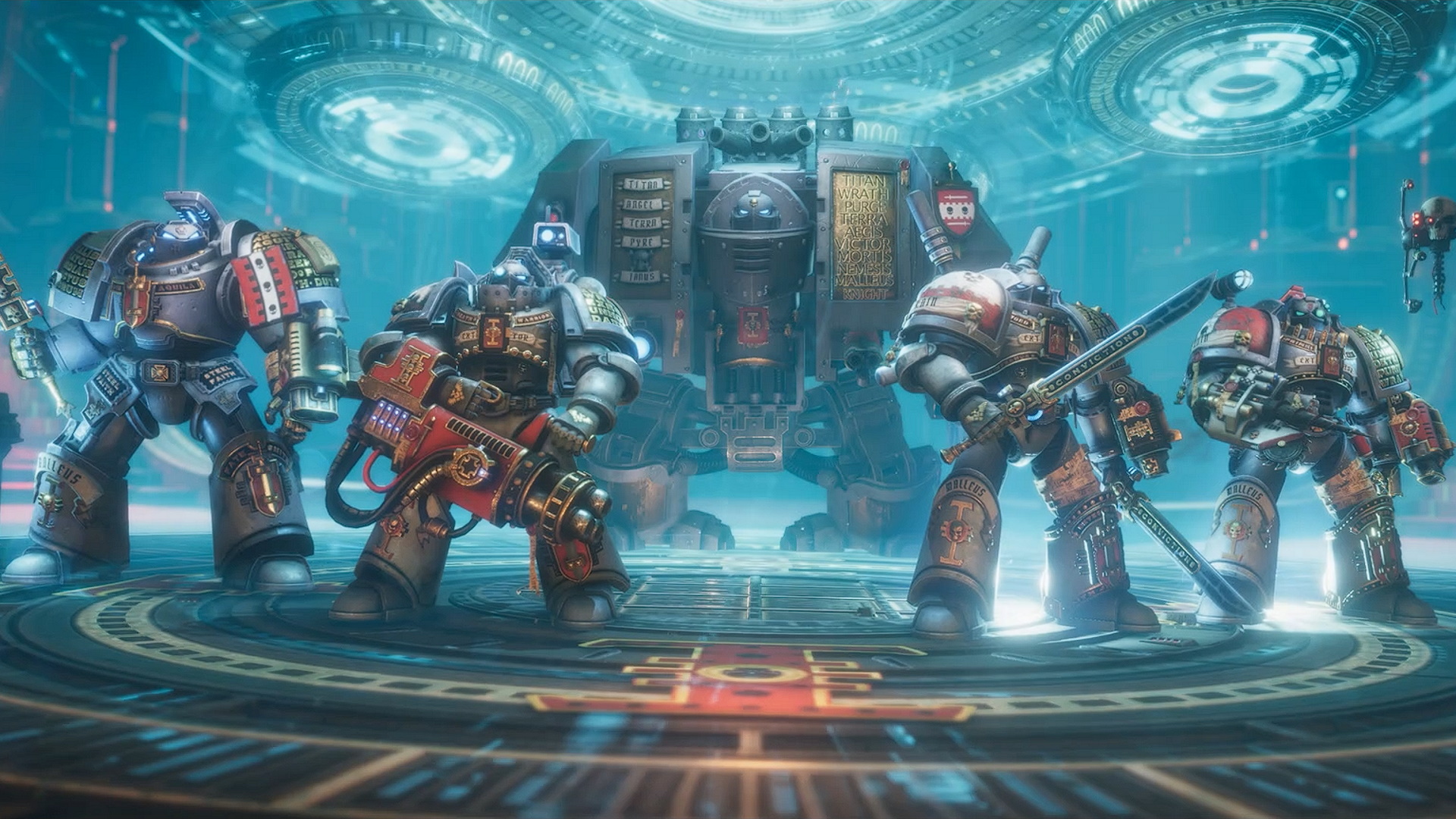
7. Warhammer 40,000: Chaos Gate – Daemonhunters (2022)
Developer: Complex Games – Publisher: Frontier Foundry
Chaos Gate – Daemonhunters is a turn-based tactical RPG that lets you command the elite Grey Knights Space Marines in a battle against the forces of Chaos. If Dawn of War II was 40K meets XCOM in real-time, Daemonhunters is 40K meets XCOM in turn-based form – and it excels at it. It’s actually a modern reimagining of a 1998 title (Chaos Gate) and it brings that classic concept into the 2020s with style.
You lead a strike force of Grey Knights (secret, psyker Space Marines dedicated to fighting demons) aboard the strike cruiser “Baleful Edict,” traveling across star systems to quell a plague called The Bloom unleashed by the Chaos god Nurgle. The campaign mixes strategic management (upgrading your ship, researching cures, deciding which planet to save from corruption) with tactical missions where your Knights deploy to the surface and kick some daemonic tail.
On the battlefield, Daemonhunters offers deep and satisfying turn-based combat. Each Grey Knight is highly customizable – you have classes like Justicars, Interceptors, Purgators, and Apothecaries, each with skill trees, gear loadouts, and psychic abilities. The game emphasizes aggressive, up-close combat despite being turn-based.
Grey Knights excel at melee, and the environment is full of interactive elements (you can knock over pillars, detonate plaguespreaders, etc., to damage foes). A signature mechanic is the Precision Targeting system: when you inflict a critical hit, you can choose how to maim the enemy (for example, disable a cultist’s ranged arm or remove an elite enemy’s mutations) to shift the tide of battle.
Between firefights and sword duels, you’ll also harness psychic powers – e.g. a Librarian can teleport the entire squad into the fray or a Purgator can unleash sanctified psychic barrages. The enemies, meanwhile, are the grotesque minions of Nurgle: pus-filled Cultists, Mutants, and enormous Death Guard Chaos Marines and demons.
The game does a fantastic job capturing Nurgle’s creepy, plague-infested aesthetic (every map oozes with fungus and disease). It also captures the ethos of the Grey Knights – there’s an Inquisitor who constantly challenges your methods, and you must make grim moral choices about how to contain The Bloom. The overall feeling is “rich, raucous Space Marine strategy” with high production values.
Warhammer 40,000: Chaos Gate – Daemonhunters Reception & Impact
Chaos Gate – Daemonhunters was met with “generally favorable” reviews (81/100 on Metacritic), and it quickly earned a reputation as one of the best 40K strategy games in years. Critics like PC Gamer scored it 87/100, applauding its slick tactical gameplay and deep use of Warhammer lore. The fusion of XCOM-like strategy with 40K flavor was a winning formula – IGN noted it feels approachable for genre newcomers but still challenging for veterans, and Eurogamer gave it a “Recommended” badge.
Players have loved the level of customization and the satisfying challenge (it can be punishing if you’re careless, befitting a fight against Chaos). The game’s cinematic kill sequences and dramatic soundtrack help every battle feel momentous. Importantly, Daemonhunters also received post-launch support: the “Duty Eternal” DLC added the option to deploy a mighty Grey Knights Dreadnought in missions, which was a dream come true for fans wanting even more firepower.
The success of this title didn’t go unnoticed – it was nominated for Strategy Game of the Year at the 2023 D.I.C.E. Awards, putting it in prestigious company. Frontier Foundry was so pleased that they acquired Complex Games after release to potentially build on this success.
For Warhammer enthusiasts, Chaos Gate – Daemonhunters showed how well the universe translates to turn-based strategy when given the royal treatment. It’s a lengthy, replayable, and rewarding campaign that stands proudly alongside XCOM and Jagged Alliance as a top-tier tactics game – with the added bonus that it’s dripping in authentic 40K atmosphere at every turn.

8. Warhammer 40,000: Battlefleet Gothic – Armada 2 (2019)
Developer: Tindalos Interactive – Publisher: Focus Home Interactive (Focus Entertainment)
Battlefleet Gothic: Armada 2 shifts the Warhammer 40K conflict to the stars, delivering epic spacefleet battles in the grim darkness of the far future. Most Warhammer games focus on ground warfare, but Battlefleet Gothic reminds us that in this universe, war rages in space just as fiercely.
Based on the classic tabletop game Battlefleet Gothic, Armada 2 lets you command colossal starships – essentially gothic cathedrals flying through space armed with countless guns. The game features all the major spacefaring factions, from the stalwart Imperial Navy and Space Marine fleets to the wicked Chaos armada, ancient Necron ships, Tyranid bio-vessels, Aeldari corsairs, Ork warflotillas, and more. This sequel one-ups its predecessor by including 12 playable factions (up from 6 in the first game) and three sizeable campaigns.
In campaign mode, Armada 2 offers three distinct story-driven campaigns: one for the Imperium (humanity’s navy led by Admiral Spire), one for the Necrons, and one for the Tyranids. Each campaign presents a different perspective and strategy – for example, the Imperium campaign follows the events of the Gathering Storm and Indomitus Crusade in 40K lore (including fighting the corrupted forces of Chaos after the fall of Cadia), whereas the Tyranid campaign is all about consuming world after world to feed the hive fleet.
The structure blends turn-based strategy (managing sectors on a star map, building and repairing ships, and allocating forces to defend multiple star systems) with real-time battles when fleets clash. There’s a light 4X element in capturing systems for resources and fortifying them, but the core is the real-time tactical combat between warships.
Once in battle, Armada 2 plays out in pausable real-time. You’ll issue orders to your cruisers, battleships, and escorts on a 2D plane (space is effectively an ocean). Battles have a majestic, ponderous feel – massive ships turning slowly, broadsiding each other with salvos of macro-cannon fire, or launching squadrons of attack craft and torpedoes across the void.
Positioning and timing are key; for instance, Imperial ships excel at long-range broadsides and sturdy defense, while Eldar craft are fragile but can dart around for hit-and-run strikes. Each faction truly wages war in the void differently. The Necrons, as an example, have fewer ships but they are high-tech and can teleport short distances, whereas Ork ships love to close distance and ram the enemy at point-blank.
The game’s scale is impressive – you might have dozens of capital ships on screen duking it out amid fields of drifting wreckage and nebulae. And when a ship’s health is almost gone, you face the critical decision of whether to warp it out to save it or keep it in the fight risking a glorious (or fiery) death.
These cinematic space engagements scratch a very specific itch for Warhammer fans: Armada 2 successfully portrays the grandeur and despair of Warhammer’s void warfare, where “in the grim darkness of the 41st millennium, there is only war” – even in space.
Warhammer 40,000: Battlefleet Gothic – Armada 2 Reception & Impact
Battlefleet Gothic: Armada 2 was well received as a marked improvement over the first game. Critics noted it was “larger, more varied and more epic than the first episode,” delivering exactly what a sequel should. The inclusion of multiple campaigns and all the factions at launch earned goodwill from players who were used to such games holding content back for DLC.
The game’s learning curve is a bit steep (as fleet management and naval-style combat can be complex), but once mastered, it offers some of the most unique RTS gameplay in the Warhammer catalogue. Reviewers praised how each faction felt true to its lore in mechanics – for example, Tyranid ships can board and literally devour enemy crews, reflecting their biological horror, whereas Chaos fleets can use demonic powers at range.
The spectacle of battles also got positive notes; it’s hard not to feel awe when a Phalanx (gigantic Space Marine star-fortress) unleashes a salvo that obliterates an enemy cruiser, or when a Tyranid Hive Ship closes in to engulf a foe.
Although primarily a single-player experience, Armada 2 also supports skirmish and online multiplayer battles, which a dedicated niche community still enjoys. The developers released balance patches and new game modes (like a coop campaign and fleet skirmish options) post-launch, showing solid support.
The game arguably didn’t break into mainstream circles (space RTS is a niche within a niche), but among Warhammer devotees it’s considered a must-play if you love the naval combat aspect of the lore. Notably, Armada 2 arrived at a time when Warhammer 40K’s lore was advancing (the fall of Cadia, etc.), and it allowed players to participate in pivotal story events such as the fight against Abaddon’s 13th Black Crusade.
This lore integration gave it extra appeal for those following the tabletop narrative. In summary, Battlefleet Gothic: Armada 2 earns its place in the top 10 for delivering an authentic, engaging, and content-rich space warfare experience. It proved that the awe of commanding a battle barge or hive fleet could be just as thrilling as directing armies on the ground, thereby broadening the horizons (literally) of what a Warhammer 40K game can be.

9. Warhammer 40,000: Space Marine (2011)
Developer: Relic Entertainment – Publisher: THQ (now Sega)
Warhammer 40K: Space Marine is a visceral third-person shooter/hack-n-slash hybrid that has achieved cult classic status among 40K fans. Developed by Relic (famed for RTS games), this title was a bold departure into action and succeeded in making the player feel like an unstoppable superhuman warrior.
You play as Captain Titus of the Ultramarines Chapter, leading a small squad against an Ork invasion (and later Chaos demons) on an Imperial Forge World. The game throws you right into the fray – famously, Titus never takes cover behind waist-high walls. Instead, you charge headlong into enemies with a chainsword or roaring bolter, relying on brutal executions to regain health. This design was a “revelation” in an era dominated by cover shooters, letting Space Marines fight as the fearless, hulking heroes they are in lore.
Combat in Space Marine is chunky, gory, and immensely satisfying. Every encounter reminds you that Titus is a one-man army. You wade through hordes of Orks, switching fluidly between shooting and melee – thinning the green tide with bolter fire, then chopping down the survivors with your chainsword or thunder hammer. When your health runs low, you execute a stunned enemy in a grisly cinematic kill to rejuvenate (for example, sawing an Ork in half or stomping a Chaos cultist’s skull).
The game also introduces jump pack sequences where Titus rockets into the sky and slams down like a meteor – an early level has you drop from a cruiser straight into an Ork horde, exemplifying the over-the-top action. This gameplay captures the empowerment fantasy of being a Space Marine so well that even a decade later fans still replay it for that adrenaline rush.
The narrative is straightforward but effective, serving up iconic 40K moments. Titus is an Ultramarine – the poster-boy chapter of Space Marines known for their strict adherence to the Codex Astartes (and often considered a bit “by-the-book”). The story leverages this by having Titus bend the rules in dire situations, showing a rebellious streak despite Ultramarine conservatism.
Voiced by Mark Strong, Titus exudes stoic badassery. There’s a memorable scene where battle-weary Imperial Guardsmen look up at him in awe – a literal “several-feet-shorter” gap between normal humans and a transhuman Space Marine. These touches drive home the scale and lore of 40K. By the end, Titus faces not only alien Waaagh! warbosses but a Chaos Space Marine champion, giving players a taste of a full spectrum of enemies.
Warhammer 40,000: Space Marine Reception & Legacy
Upon release, Space Marine earned solid if not spectacular reviews (around 74/100 on PC). Critics praised its polished action and faithful Warhammer atmosphere – IGN highlighted the “re-creation of the 40K universe” and satisfying enemy variety. The campaign (~12 hours) was noted as tightly paced and enjoyable, though some felt it was a bit one-note.
Importantly, the game resonated deeply with Warhammer fans. It sold well enough and developed a loyal following over the years. The lack of a sequel for so long only grew its legend – fans kept the flame alive, discussing what a follow-up could be, swapping stories of their favorite chainsword kills, and keeping the multiplayer co-op “Exterminatus” mode active. The love for this game is a big reason Space Marine 2 became one of the most hyped announcements in 40K gaming.
In retrospect, Space Marine is celebrated for nailing the feeling of being a Space Marine better than almost any other title. Its impact on the community was significant: it proved that a 40K action game could work brilliantly, paving the way for the massive success of its sequel over a decade later. For many, Space Marine (2011) remains a go-to recommendation to anyone looking to step into the armor of a bolter-wielding Adeptus Astartes and “know no fear.”
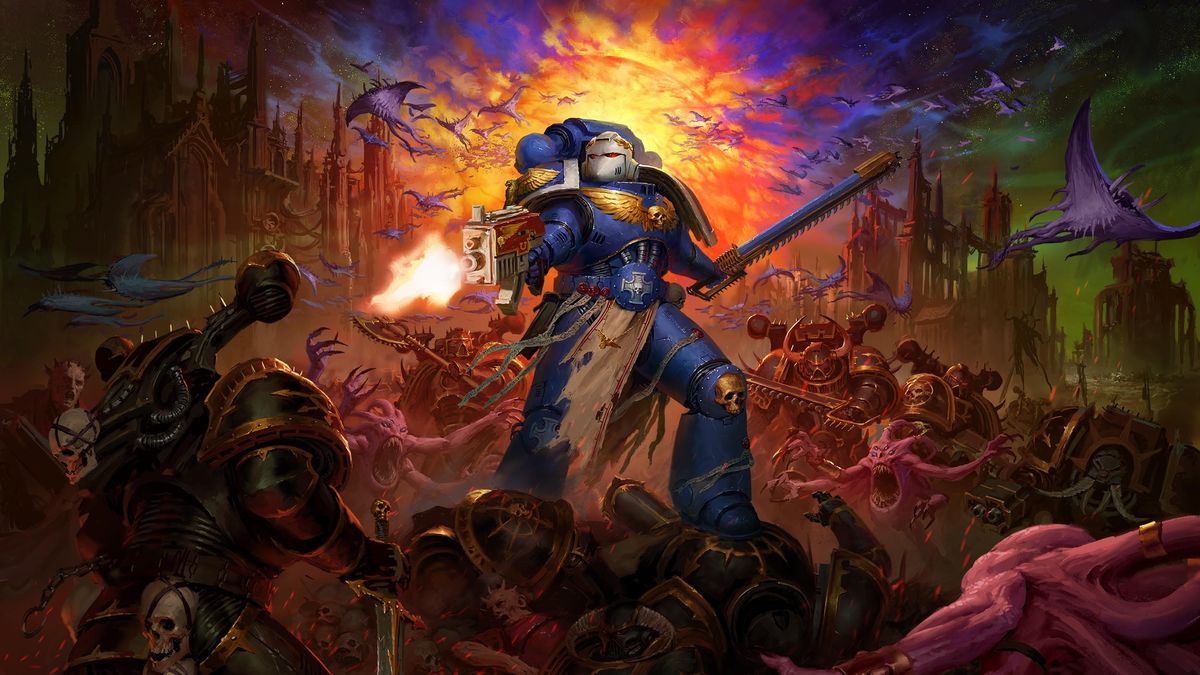
10. Warhammer 40,000: Boltgun (2023)
Developer/Publisher: Stellar Entertainment
Boltgun is a fast-paced, roguelite shooter that captures the unyielding ferocity of a Space Marine on a suicide mission in the grim darkness of the 41st millennium. In this game, you play as a lone Space Marine, charged with battling endless waves of Chaos, Orks, and other xenos. Each playthrough is procedurally generated, ensuring that every run offers a fresh, relentless gauntlet of bolter fire, melee mayhem, and explosive set-pieces.
The gameplay demands aggressive tactics and quick reflexes. Players can discover powerful temporary upgrades and a variety of weapons—ranging from bolters to chainswords — while navigating dark, ruined corridors of derelict space hulks and corrupted fortresses. The minimal narrative hints at a larger conflict, with each level reinforcing the eternal struggle of humanity against the forces of Chaos. Its retro-inspired pixel art style and industrial soundtrack evoke a sense of gritty nostalgia combined with modern intensity.
The game’s core loop is simple yet unforgiving: fight through randomized levels, upgrade your character between runs, and aim to beat your previous score. With its emphasis on high-risk, high-reward combat, Boltgun embodies the brutal, endless warfare of the Warhammer 40K universe — where every death is a lesson and every victory is hard-won.
Warhammer 40,000: Boltgun Reception & Impact
Boltgun has been well-received by both players and critics, earning praise for its tight controls, authentic Warhammer atmosphere, and addictive roguelite mechanics. Reviewers have highlighted its crisp pixel art visuals and thundering sound effects as perfectly capturing the chaos of the 41st millennium, while its challenging gameplay keeps players coming back for more. Its overall balance between brutality and strategy has resonated with fans of both roguelites and Warhammer 40K alike.
The game has garnered a dedicated following on platforms like Steam, where positive reviews emphasize its replayability and the thrill of every randomized run. While it may not have the broad mainstream appeal of larger 40K titles, Boltgun has carved out a niche that celebrates the raw power and relentless energy of the Warhammer universe. Its community continues to grow as players share high scores, strategies, and custom mods that extend the game’s life even further.
Ultimately, Boltgun stands as a testament to how the essence of Warhammer 40K can be distilled into an intense, action-packed roguelite. By merging classic retro aesthetics with modern gameplay innovations, it delivers a uniquely satisfying experience that embodies the Emperor’s wrath in every explosive run. Whether you’re a long-time fan of 40K or new to the universe, Boltgun offers an unmissable adrenaline rush in a setting where there is only war.
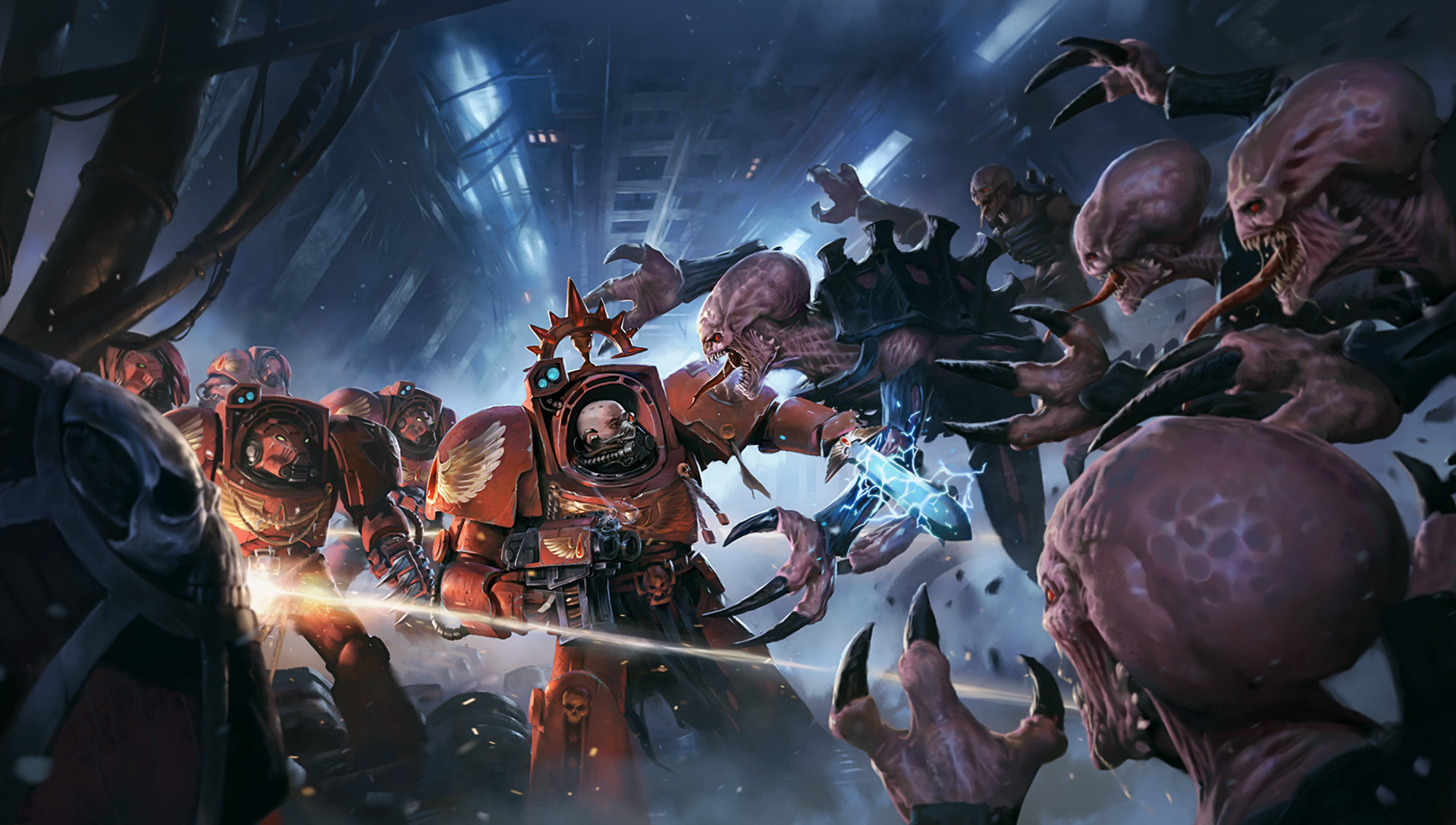
11. Warhammer 40,000: Space Hulk: Tactics (2018)
Developer: Cyanide – Publisher: Focus Home Interactive
Space Hulk: Tactics is a turn-based strategy game that adapts one of Warhammer 40K’s most iconic board games into a deep digital experience. The term “Space Hulk” refers to a giant conglomeration of derelict ships and debris drifting in space – often infested with deadly Genestealers (vicious Tyranid xenomorphs).
In the classic 1989 board game, a squad of Space Marine Terminators (elite veterans in heavy armor) ventures into these hulks to purge the alien threat, in missions highly reminiscent of James Cameron’s Aliens. Many video game versions of Space Hulk have been made, but Tactics stands out as the most robust and faithful adaptation, earning a reputation as “the XCOM-but-with-space-marines everyone wanted.”
In Space Hulk: Tactics, you can play two full campaigns: one as the Blood Angels Terminator squad and, for the first time, one as the Genestealers themselves. This dual perspective is a blast – the Terminator campaign follows the traditional narrative of boarding a hulk and completing objectives (retrieve relics, rescue battle-brothers, destroy nest nodes, etc.), all while surviving ambushes in tight corridors.
The Genestealer campaign flips the script, letting you be the horde of aliens picking off Space Marines one by one. The core gameplay is turn-based and grid-based, very much like the board game. Terminators are few but powerful; they move slowly through claustrophobic map layouts, using bolters, flamers, and power fists to cover hallways and intersections.
Genestealers are fast, innumerable, and deadly in melee, but they rely on the element of surprise – they spawn as “blips” on the Marines’ scanners, their exact numbers unknown until they come into line of sight. This creates incredible tension: every corner could hide a swarm of claws ready to strike. Cyanide’s AI was praised for behaving cleverly like a human opponent, often lurking just out of sight until enough Genestealers mass for a decisive charge.
Space Hulk: Tactics enriches the board game formula with some new mechanics too. It introduces a card system where both sides have a hand of cards that can be played for one-time bonuses or converted into extra action points. For example, a Terminator might use a card to perform an extra overwatch shot or to block a corridor for a turn. These additions are well-balanced and feel like natural extensions of the tabletop rules (almost like an official expansion).
The game also offers a first-person camera option when controlling Terminators, which, while not practical for full play, is a fun nod to the classic 1993 first-person Space Hulk game and lets you enjoy the tension from an immersive angle. Multiplayer is included as well, allowing competitive one-on-one matches (one side marines, one side genestealers) that replicate the board game experience with friends around the world.
Warhammer 40,000: Space Hulk: Tactics Reception & Legacy
Space Hulk: Tactics flew under the radar for many, partly due to a string of middling Space Hulk games before it that dampened enthusiasm. As PC Gamer noted, it was “criminally underrated because it came out after a string of middling games with the words Space Hulk in their names,” but for those who gave it a chance, it proved to be the best video game take on Space Hulk yet.
Fans of the board game appreciated how faithfully it captured the asymmetrical gameplay – the feeling of controlling “five clunky walking tanks pitted against limitless numbers of speedy melee monsters” is intact and as thrilling as ever. The addition of the Genestealer campaign was lauded since it’s something the board game never offered – finally, being the aliens and swarming the Emperor’s finest is just as fun as it sounds.
Critically, Tactics received generally positive reviews, though not blockbuster scores. It was seen as a solid adaptation with a few rough edges (load times and a somewhat clunky interface were minor points of critique). However, among the 40K community, it has a special place as a game that “understands what makes [Space Hulk] fun” and even builds upon it smartly.
The fact that the developers treated the source material with obvious respect – from the atmospheric Terminator briefing rooms to the detailed Genestealer animations – earned it praise. Overwatch mechanics, jammed storm bolters, last-stand moments where a lone Terminator holds a hallway against ten Genestealers… the game delivers all those classic moments that Space Hulk is known for.
While it may not have the broad appeal of some other titles on this list, Space Hulk: Tactics is a gem for strategy enthusiasts and 40K lore lovers, especially those who appreciate a nail-biting, tactical battle of wits. In the realm of 40K video games, it represents the tabletop heritage proudly, and that secures its spot among the top Warhammer 40K games of all time.
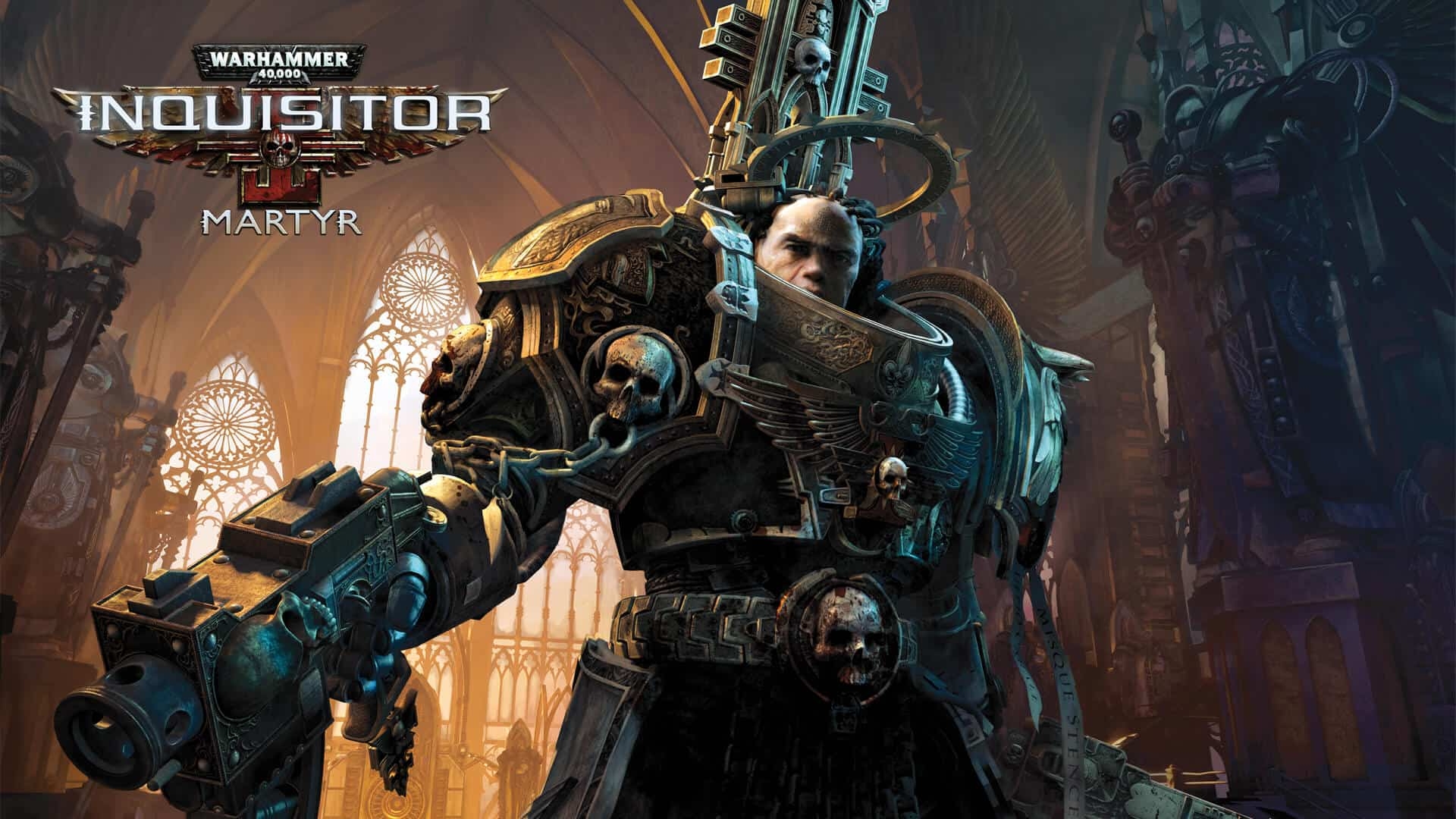
12. Warhammer 40,000: Inquisitor – Martyr
Developer/Publisher: NeocoreGames
Warhammer 40,000: Inquisitor – Martyr is a dark, action-packed RPG that plunges you into the grim corridors of the Imperium, where you assume the role of an Inquisitor tasked with rooting out heresy, corruption, and Chaos. Set in a richly detailed 41st millennium, the game lets you explore vast, ruined environments, ancient cathedrals, and war-torn hives while unraveling sinister plots that threaten humanity. The narrative is steeped in Warhammer lore, blending mystery with relentless brutality.
Players create and customize their own Inquisitor, choosing from various specializations that influence combat style and narrative decisions. As you progress, you’ll gather a loyal retinue of diverse companions—each with unique skills and dark backstories—who aid you in your investigations and battles. The gameplay interweaves intense third-person combat with deep role-playing elements, where every decision can shape your journey, influence relationships, and alter the fate of entire worlds.
The combat system in Inquisitor – Martyr is visceral and dynamic. You engage in fast-paced, real-time battles against hordes of Chaos cultists, mutated abominations, and daemonic entities. A blend of melee attacks, ranged weaponry, and potent psychic abilities allows you to tailor your fighting style, making every encounter both challenging and rewarding. As you traverse the ruined underbelly of the Imperium, strategic use of cover and environmental hazards adds a tactical depth that rewards careful planning.
Exploration plays a key role, with the game featuring a sprawling open world full of hidden secrets, lore-rich side quests, and dangerous encounters. Investigate abandoned temples, crypts, and derelict space hulks to uncover forbidden relics and ancient texts that provide deeper insights into the Imperium’s dark past. These discoveries not only enhance your character’s abilities but also unlock powerful upgrades and narrative branches that can lead to multiple endings.
Overall, Inquisitor – Martyr offers an immersive experience that combines the grim atmosphere of Warhammer 40K with robust RPG mechanics. Its rich world-building, detailed environments, and the constant threat of corruption create a game that is as challenging as it is rewarding—truly capturing the essence of being an Inquisitor in a universe where there is only war and treachery.
Warhammer 40,000: Inquisitor – Martyr Reception & Impact
Inquisitor – Martyr received mixed-to-positive reviews from both critics and players. Many praised the game for its deep lore, atmospheric world, and engaging combat mechanics that faithfully evoke the grim darkness of the Warhammer 40K universe. Its detailed environments and the sheer scale of exploration were lauded, though some critics noted that the pacing could feel uneven and certain technical issues occasionally disrupted the immersion.
Critics have highlighted the game’s ambition in blending narrative and action-RPG elements, with some calling it a bold, if imperfect, entry into the Warhammer franchise. Players appreciated the flexibility in character customization and the weight of decision-making in shaping the storyline. Despite its ambitious scope, some found that the game’s complexity and occasional bugs detracted from the overall experience, but the passionate fanbase remains engaged and hopeful for future updates.
Commercially, Inquisitor – Martyr has maintained a dedicated following, bolstered by a series of patches and DLCs that have expanded both its content and depth. The game’s unique take on the Inquisitorial aspect of 40K – a perspective less explored by other titles – has carved out its own niche. It continues to generate discussion on forums and social media, with many fans praising its narrative depth and dark aesthetic, while others eagerly anticipate further refinements in upcoming updates.
Overall, Warhammer 40,000: Inquisitor – Martyr stands as a noteworthy title in the franchise for its ambitious storytelling and atmospheric portrayal of the Imperium’s internal struggles. While it may not have reached the mainstream popularity of some strategy or shooter titles, its impact on the RPG segment of 40K gaming is significant. It offers a unique window into the secretive world of the Inquisition, and for those who appreciate the lore and the dark, relentless nature of the 41st millennium, it remains a compelling, if sometimes challenging, experience.

13. Warhammer 40,000: Gladius – Relics of War (2018)
Developer: Proxy Studios – Publisher: Slitherine Ltd.
Gladius – Relics of War is a unique entry in the Warhammer 40K games lineup as it explores the 4X genre (eXplore, eXpand, eXploit, eXterminate) – essentially a Civilization-style strategy game set in the 40K universe. However, Gladius distinguishes itself from classic 4X games by emphasizing the last “X” (Exterminate) above all else.
In the grim darkness of the 41st millennium, there is only war – and accordingly, Gladius does away with diplomacy and trading entirely, making it an unyielding fight for domination on a hostile planet. It’s often described as “Civilization meets Warhammer, but with constant war”, which turns out to be a fitting formula for 40K’s relentless conflict.
Set on the newly colonized planet Gladius Prime, the game features an initial roster of four factions: Space Marines, Astra Militarum (Imperial Guard), Orks, and Necrons. Each faction has distinct units, technologies, and playstyles that capture their lore: Space Marines, for instance, field small numbers of powerful units and can deploy city-fortresses via drop pods, while the Imperial Guard can sprawl across the map with multiple cities and countless infantry and tanks. Orks thrive in continuous combat (growing stronger the more fights they win), and Necrons use enslaved undead labor and can teleport their forces across the map.
Through later DLCs, other factions like the Tyranids, T’au, Chaos Space Marines, and Aeldari were added, bringing the total up to 9 playable factions – a great variety for a strategy title. In a typical Gladius match, you’ll start with a single city (or equivalent for your faction) and a few units, then expand your territory, research new technologies, build structures to increase production, and train more troops. Neutral dangers roam the map too (from ambulling beasts to raiding human survivors), so there’s PvE action alongside the PvP or AI opponents.
The twist is that in Gladius, conflict starts early and never truly lets up. There are no negotiations – every encounter with another faction is a fight. This leads to a very aggressive, combat-heavy 4X experience. You’ll rush to grab resource outposts and special relics scattered around, and skirmishes over these can snowball into full wars. Terrain and city placement matter: for example, if you secure choke points or vital promethium deposits, you gain an edge.
Each faction has a quest chain (a bit of narrative context) that can culminate in a victory condition, but often matches are decided by straight conquest (total elimination of enemies). The gameplay rewards smart military tactics in a turn-based context – using combined arms, positioning, and timing your assaults after key tech upgrades can determine the winner.
For instance, as Space Marines you might hold out defensively until you unlock a Predator tank or Dreadnought walker to spearhead a counterattack, whereas as Orks you might swarm early and keep the pressure on so your Waaagh! never loses momentum. The no-diplomacy design initially surprised 4X veterans, but many came to appreciate it as it “brings you to a world of terror and violence” true to 40K, where peace is never an option.
Warhammer 40,000: Gladius – Relics of War Reception & Impact
Gladius – Relics of War received mixed-to-positive reviews upon release. Critics acknowledged that it successfully adapts the Warhammer 40K theme to a 4X template, but some felt the lack of non-military paths to victory made it less deep than a traditional Civilization game.
That said, for many Warhammer fans, Gladius was a breath of fresh air – finally a game about the broader war campaigns and not just singular battles. The focus on combat actually suited the 40K setting perfectly, and once players adjusted their expectations (knowing it’s more of a war game than a grand strategy negotiation), they found a lot to love.
The various factions were supported by flavorful unit descriptions and voice lines, bringing the tabletop units to life. The ongoing DLC support also showed the game’s success within its niche; the addition of factions like Tyranids (with their unique biomass mechanics) and T’au (with their drones and ranged supremacy) added considerable replayability.
By 2025, Gladius had a full roster that essentially turned it into a sandbox for “what if” scenarios – e.g., Necrons vs Tyranids vs Orks on a jungle world, who wins? Players could play out those scenarios endlessly.
From a community standpoint, Gladius quietly gained a dedicated following, especially among those who enjoy both Warhammer and Civilization-style games. It doesn’t have the high-profile status of something like Dawn of War, but it has carved out its own corner.
The game’s AI is competent enough to offer a challenge, and multiplayer is available for those who want to clash with friends. With a score in the low 70s on OpenCritic, it’s not the highest critically ranked on this list, but we include it here for its distinctiveness and the solid execution of a cool concept.
Gladius proves that Warhammer 40K’s universe can extend into turn-based empire-building (or rather, empire-destroying) games too. In the end, it’s all about extermination – and as every 40K fan knows, that fits the universe just fine.

14. Warhammer 40,000: Battlesector (2021)
Developer/Publisher: Slitherine Ltd.
Warhammer 40,000: Battlesector is an indie turn-based strategy game that plunges players into the brutal, unforgiving conflicts of the 41st millennium. In this title, you command squads of Space Marines on mission-critical battlefields where every decision can mean the difference between salvation and annihilation.
Set in a war-torn sector of the Imperium, the game challenges you to manage your limited resources and position your troops strategically to hold the line against overwhelming enemy forces. Its gameplay is designed to capture the relentless grind and tactical depth of the Warhammer 40K universe.
The narrative of Battlesector centers on a critical defensive operation in an isolated Imperial system, where the forces of Chaos, xenos raiders, and even internal dissent threaten to overrun a strategically vital world. As a commander, you must balance aggressive assaults with steadfast defense, reminiscent of the real-world doctrines of attrition warfare. The game’s story unfolds through a series of missions that gradually reveal the political intrigue and hidden betrayals that have destabilized the sector, all while forcing your squad into desperate, high-stakes battles.
Mechanically, Battlesector offers a blend of turn-based tactics and squad management. Each unit is meticulously designed to reflect its Warhammer 40K origins, complete with detailed abilities and synergistic upgrades that encourage careful planning. You’ll encounter scenarios where terrain, line-of-sight, and cover play crucial roles, demanding that you constantly adapt your strategies. The game rewards foresight and precision, as well as the boldness to commit your forces to risk in order to achieve a decisive breakthrough.
The art direction of Battlesector is a tribute to classic Warhammer aesthetics, featuring gritty, atmospheric visuals that evoke the grimdark nature of the 41st millennium. Dark, foreboding battlefields are rendered in striking detail, and each skirmish is punctuated by explosive special effects that bring the chaos of combat to life. Coupled with a moody, orchestral soundtrack and voiceovers steeped in Imperial fervor, the overall presentation immerses you deeply into a universe where hope is a rare commodity and war is perpetual.
Beyond the core campaign, Battlesector offers several multiplayer modes where players can pit their strategic prowess against others. These modes range from head-to-head skirmishes to cooperative missions, further extending the replayability of the game. Whether you’re defending an ancient fortress from legions of traitors or orchestrating a counterattack against a massive enemy horde, the tactical decisions you make will determine the survival of your forces and shape the fate of the Imperium.
Warhammer 40,000: Battlesector Reception & Impact
Battlesector has garnered a modest but dedicated following within the Warhammer 40K community. Critics have praised its deep tactical mechanics and faithful adherence to the grimdark aesthetic of the setting, even if its production values are not as high as those seen in blockbuster titles.
Its challenging, unforgiving gameplay has resonated with players who appreciate the high-stakes, strategic nature of Warhammer 40K combat. While it may not have reached the commercial heights of larger franchises, its niche appeal and passionate fanbase underscore its importance to the 40K gaming landscape.
Players frequently highlight Battlesector’s ability to evoke the feel of a true Warhammer battle – where every unit and decision matters – and its replayability as a major strength. Its robust multiplayer modes have also contributed to a steady, if small, community that organizes regular tournaments and strategy discussions online. For many, Battlesector is a hidden gem that captures the spirit of the Imperium in a challenging, tactical package.
Overall, Warhammer 40,000: Battlesector stands as a testament to the enduring appeal of the 41st millennium’s warfare. Though its audience is smaller compared to some of the larger Warhammer titles, its commitment to deep, strategic gameplay and its authentic portrayal of grimdark conflict make it a noteworthy entry in the franchise. It remains a must-play for enthusiasts of tactical turn-based games who crave an authentic Warhammer experience on PC.
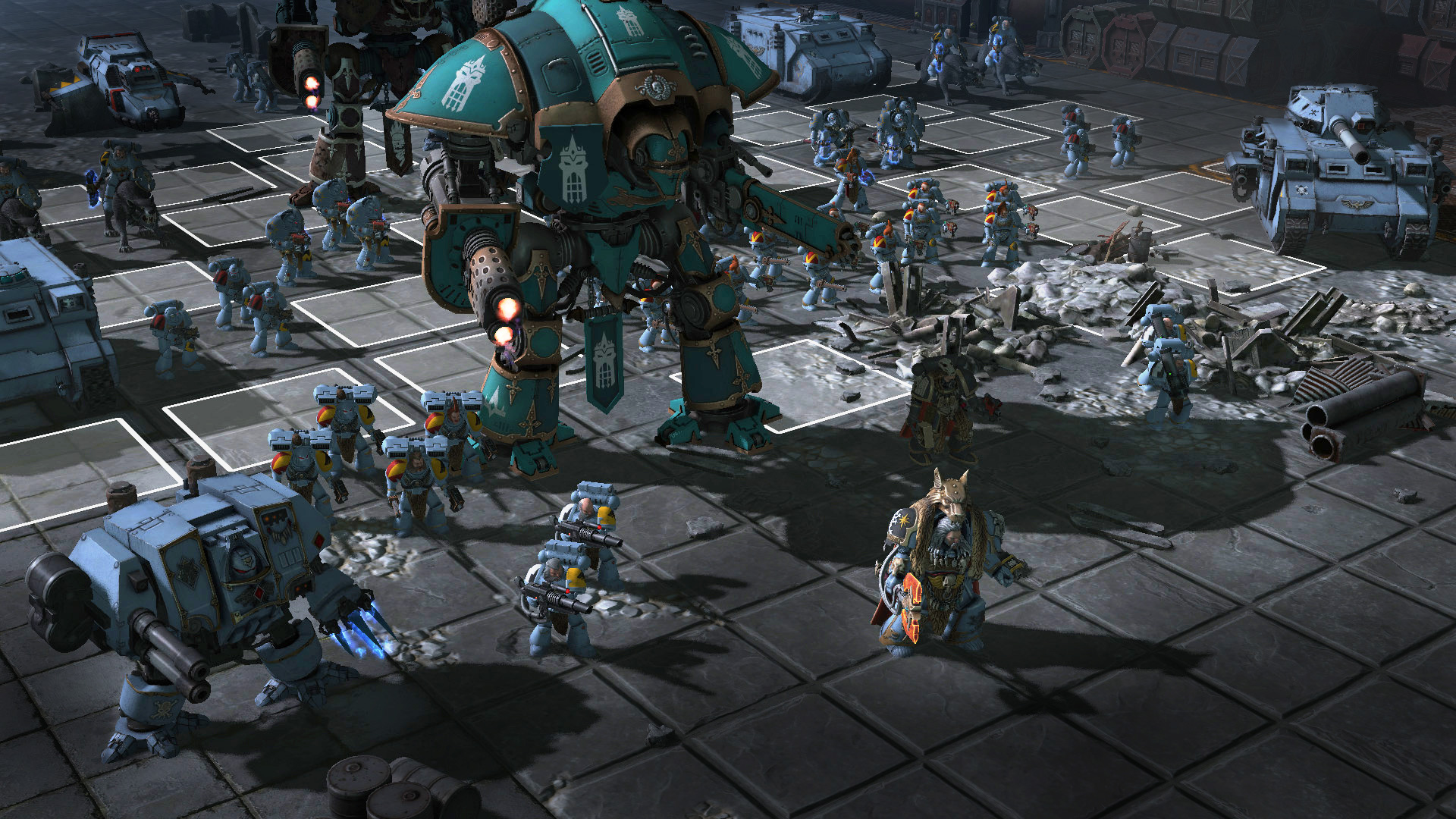
15. Warhammer 40,000: Sanctus Reach (2017)
Developer: Straylight Entertainment – Publisher: Slitherine Ltd.
Warhammer 40,000: Sanctus Reach is a turn-based tactical strategy game set amid the brutal, uncompromising conflict between the Space Wolves Space Marine Chapter and an overwhelming Ork Waaagh! invasion. Taking place in the grimdark universe of the 41st millennium, the game brings players directly into the fierce battles of the Sanctus Reach system, where humanity’s survival hangs by a thread against the relentless greenskin hordes.
At the heart of Sanctus Reach is a deep tactical combat system that emphasizes squad-based strategy, precise positioning, and thoughtful resource management. Players command elite Space Wolves troops — ranging from powerful heroes and battle-hardened infantry to mighty dreadnoughts and heavy armor — as they wage war across desolate wastelands, war-torn urban ruins, and fortifications teeming with Orks. Each battle demands careful consideration of unit strengths, terrain advantages, and tactical timing to achieve victory.
The narrative-driven campaign immerses you in a gripping saga of bravery and sacrifice. As you progress through the story, you uncover strategic objectives and personal heroics that highlight the Space Wolves’ unique blend of ferocity and brotherhood. Missions vary from desperate defensive stands to aggressive counterattacks, each interwoven with authentic Warhammer lore and character-driven drama that resonates deeply with fans of the universe.
Visually, Sanctus Reach delivers detailed, atmospheric battlefields that vividly capture the grimdark aesthetic of Warhammer 40K. The game’s design stays faithful to tabletop miniatures, showcasing meticulously rendered units and immersive environments filled with the debris of constant warfare. Coupled with dramatic combat animations and atmospheric audio — complete with the roar of bolters, the clang of armor, and guttural Ork taunts — every engagement feels suitably epic and impactful.
The game also offers extensive replayability through skirmish modes, custom scenarios, and a robust multiplayer system. Players can battle head-to-head or tackle cooperative missions, experimenting with different army compositions and tactics. The addition of expansions and DLC packs further broadens strategic possibilities, introducing new units, factions, and campaigns to deepen your tactical experience.
Warhammer 40,000: Sanctus Reach Reception & Impact
Upon release, Sanctus Reach received positive reviews from critics and players alike, particularly praised for its faithful representation of Warhammer 40K’s gritty tactical combat. Reviewers highlighted its solid mechanics, rich lore integration, and engaging scenarios, comparing it favorably to the feel and strategy of the original tabletop experience.
Players on platforms like Steam have consistently praised the game for its strategic depth, authentic Warhammer flavor, and challenging difficulty curve. While it did not reach the mainstream popularity of bigger franchises such as Dawn of War, Sanctus Reach quickly cultivated a dedicated community of strategy enthusiasts and Warhammer fans, attracted by its thoughtful tactical gameplay and immersive lore.
The game’s multiplayer and modding support have ensured a healthy, long-term player base, with many actively sharing strategies, custom scenarios, and lore discussions online. Its steady popularity among tactical gamers has helped solidify Sanctus Reach as a respected title within the Warhammer 40K gaming catalog.
Overall, Warhammer 40,000: Sanctus Reach stands out as an authentic and satisfying tactical strategy experience, capturing both the brutal intensity of Warhammer warfare and the nuanced depth of turn-based tactics. It remains a beloved choice for fans seeking a strategic challenge that respects the rich, dark lore of the Warhammer universe.
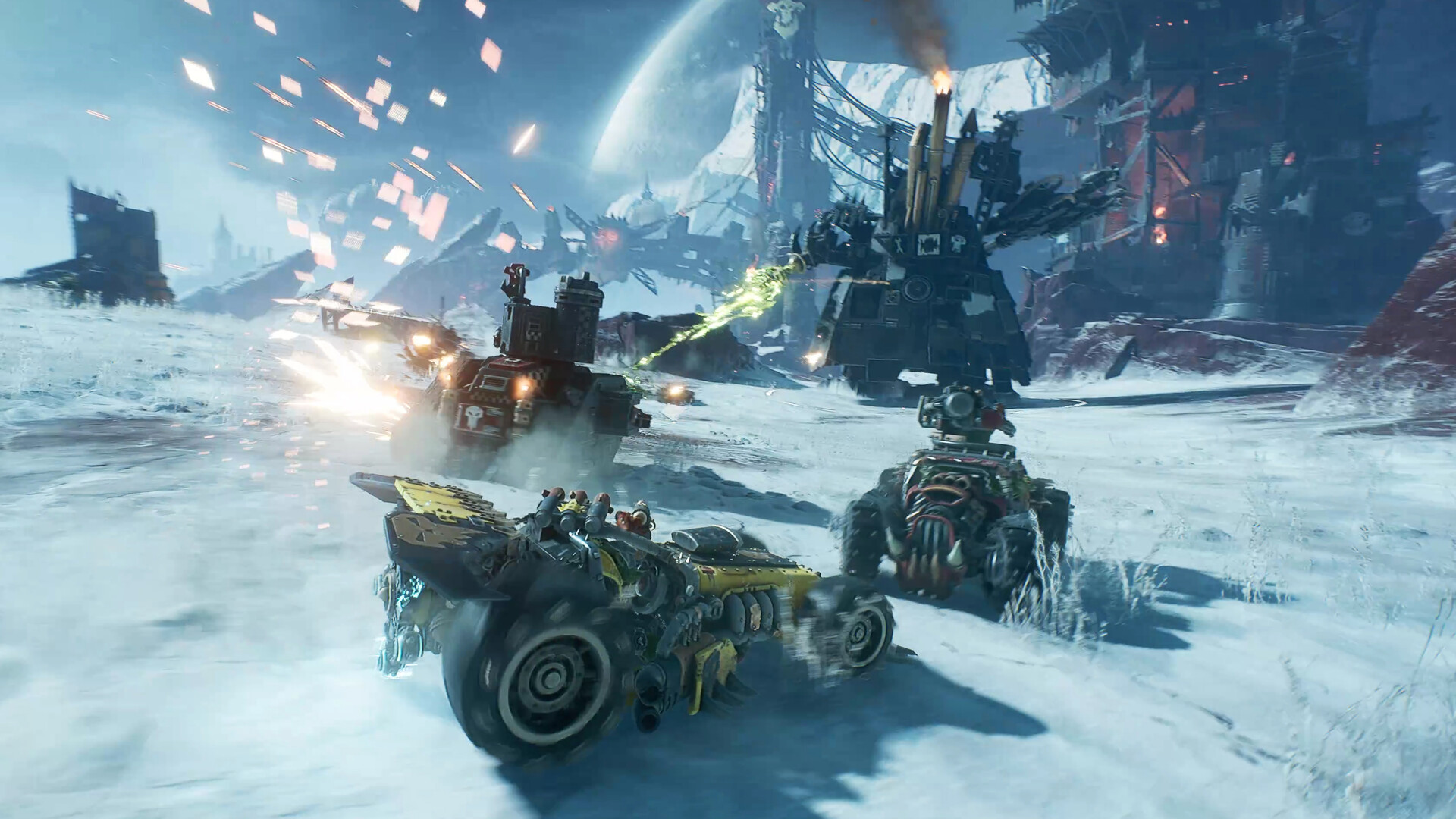
16. Warhammer 40,000: Speed Freeks (2024)
Developer: Caged Element Inc. – Publisher: PLAION
Warhammer 40,000: Speed Freeks is a fast-paced, vehicle-based combat racing game set within the chaotic universe of Warhammer 40K, where speed, destruction, and Ork brutality reign supreme. Players step into the oversized boots of wild Ork racers, piloting heavily armed, ramshackle vehicles across perilous, war-torn battlegrounds, competing not just to finish first but to survive the explosive carnage.
Gameplay focuses heavily on aggressive vehicular combat, combining breakneck speed with tactical use of outrageous weaponry — from oversized shootas and rocket launchas to melee-focused war rigs built for ramming enemies off the road. Tracks are littered with hazards, ramps, explosives, and interactive environmental features that amplify the chaos, requiring players to constantly balance speed with strategic aggression.
The game embraces the comedic yet savage spirit of Ork culture, delivering minimal story wrapped in dark humor and playful violence. The Orks’ love of reckless speed, roaring engines, and sheer destruction is brilliantly portrayed, capturing the whimsical yet brutal essence of their society. Players can customize and upgrade their rides, enhancing speed, durability, and firepower, ensuring no two races feel quite the same.
Graphically, Speed Freeks employs vibrant, stylized visuals with exaggerated vehicle designs true to Warhammer’s iconic greenskins. Explosions, crashes, and combat sequences pop with energetic flair, backed by a loud, adrenaline-pumping soundtrack filled with metal riffs and Orkish battle chants. Each race feels like a chaotic festival of destruction—perfectly fitting the game’s fast, frantic gameplay.
Multiplayer modes further boost replayability, allowing up to 16 players to battle simultaneously in various competitive scenarios, including team-based deathmatches and high-stakes elimination races. Its approachable yet skillful mechanics appeal to both casual racers and competitive players, fostering a lively community around its unique brand of high-speed mayhem.
Warhammer 40,000: Speed Freeks Reception & Impact
Upon its announcement and early previews, Speed Freeks quickly generated excitement within the Warhammer community, praised for its inventive gameplay and faithful portrayal of Orkish culture. Early impressions and beta feedback highlighted its satisfying combination of accessible controls, addictive vehicular combat, and humorously chaotic gameplay.
Players and critics alike have enjoyed its refreshing departure from the traditional Warhammer formula, celebrating the game’s unapologetic embrace of Orkish madness. While not positioned as a mainstream blockbuster, Speed Freeks has attracted a dedicated fanbase appreciative of its distinct approach, making it a standout niche title within the Warhammer 40K gaming landscape.
On platforms like Steam, community feedback is strongly positive, with fans frequently applauding its fast-paced multiplayer action and the thrill of its destructively joyful gameplay. Continued developer support through patches and content updates has also maintained steady player engagement.
Overall, Warhammer 40,000: Speed Freeks successfully delivers a unique, high-energy racing-combat experience, offering Warhammer fans a different yet thoroughly enjoyable entry point into the universe. Its blend of humor, action, and Orkish bravado continues to attract gamers looking for pure, unrestrained fun set against the beloved grimdark backdrop of Warhammer 40K.
With these titles, we see how Warhammer 40K’s rich universe has been translated into a variety of gaming genres. Each game above made its mark by capturing some facet of the 40K experience – whether it’s the tactical acumen of a Space Marine commander, the blood-pumping fury of charging into battle chainsword-first, or the patient grand strategy of subjugating a planet in the Emperor’s name. From the early 2000s classics to the latest hits, the 41st millennium continues to shine on PC, offering both longtime fans and newcomers a chance to live out epic moments in the grim darkness of the far future.
FAQ: Warhammer 40K Games
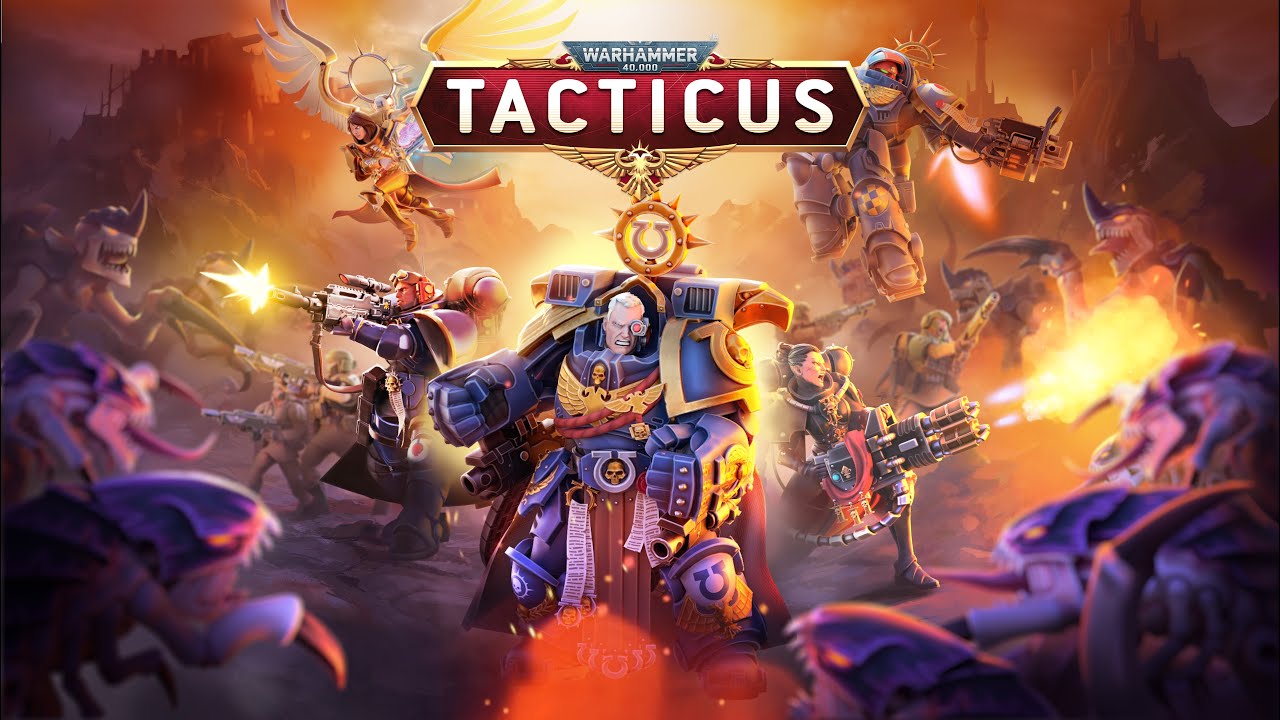
What’s the best Warhammer 40K mobile game?
When it comes to Warhammer 40K on mobile, Warhammer 40,000: Tacticus is currently one of the top choices. Tacticus (released in 2022) is a turn-based strategy/arena battler designed for phones, and it has earned praise for translating the 40K universe into a pocket-sized experience.
In Tacticus, you collect and upgrade heroes from various factions via gacha mechanics, then form squads to battle through quick missions and PvP arenas. The gameplay is easy to jump into – think of it like a bite-sized tactical RPG – yet it has surprising depth and lots of content to unlock.
Since it’s continually updated with new characters and events, Tacticus has a growing community and long-term engagement, making it a standout among mobile offerings. Its “freemium” model is fairly friendly to casual play, and importantly, it just feels like 40K, with familiar units (Space Marine heroes, Necron warriors, etc.) and grimdark battlegrounds.
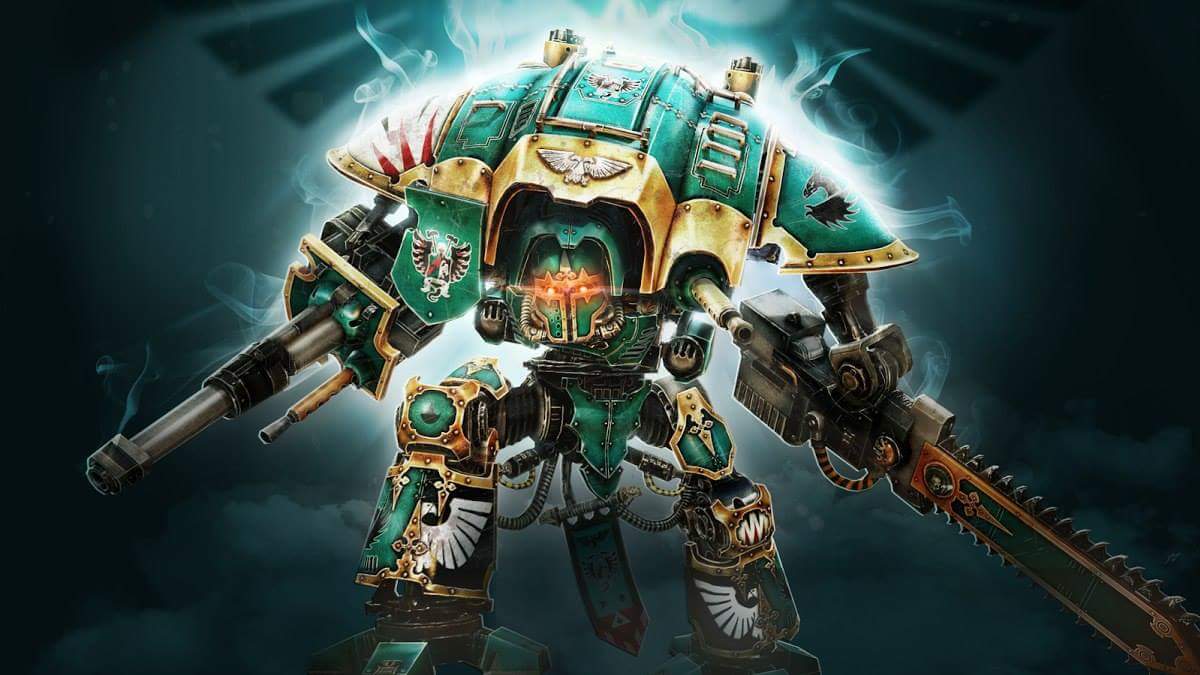
Another strong mobile title is Warhammer 40,000: Freeblade, an action game where you control an Imperial Knight mech. Freeblade lets you stomp and shoot through waves of enemies in a visually impressive on-rails shooter format. Notably, it won an “App Store Best of 2015” award, highlighting its quality.
The appeal of Freeblade is the sheer power trip of piloting a massive war machine – you tap to fire giant cannons and swipe to slash with a chainsword, making short work of Orks and Chaos foes. It’s simple yet satisfying, and it shows off console-like graphics on mobile devices. While its gameplay is more arcade-like and less strategic than Tacticus, it’s perfect for quick bursts of explosive fun.
There are other 40K mobile games too – for instance, Warhammer 40,000: Space Wolf blends turn-based tactics with card-based combat, and Lost Crusade attempts a 4X base-building formula – but these have had more mixed receptions. Overall, if you’re looking for the best mobile Warhammer 40K experience right now, Tacticus is a safe bet due to its accessible strategy gameplay and active support. It captures the collection and squad tactics aspect nicely on a phone. For a more action-oriented fix, Freeblade remains a high-water mark on mobile for sheer cinematic 40K destruction. Both games demonstrate that the God-Emperor’s light shines even on the smaller screens, allowing you to enjoy some grimdark battles on the go.
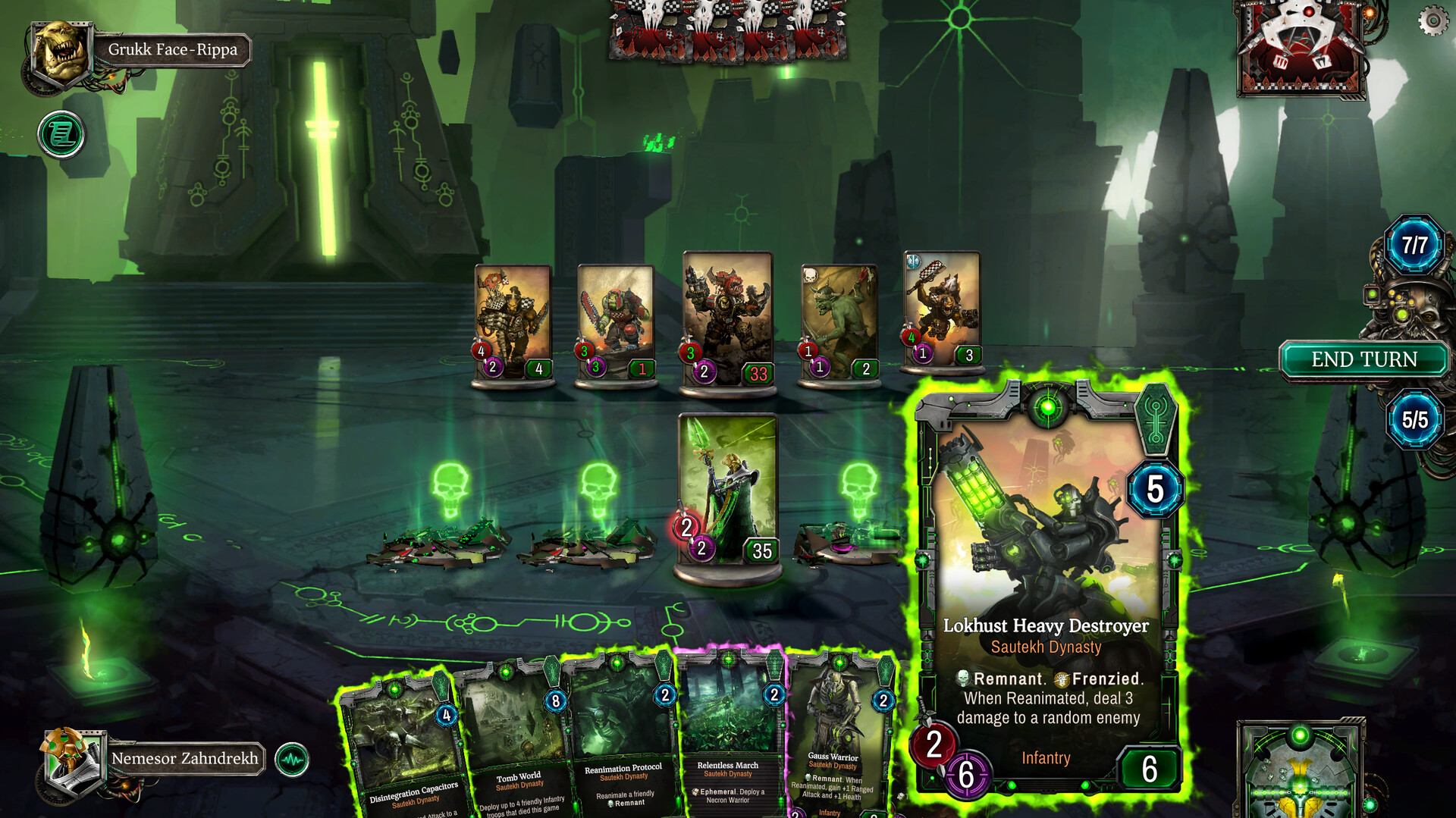
What’s the best Warhammer 40K card game?
Warhammer 40K has ventured into the digital card game genre as well, and the current frontrunner is Warhammer 40,000: Warpforge. Warpforge is a free-to-play collectible card game (CCG) that launched out of Early Access in late 2024, and it has quickly positioned itself as the top 40K-themed card experience.
In Warpforge, you build decks around the major 40K factions and compete in tactical card battles, similar to other digital card games (like Hearthstone or Magic: The Gathering: Arena). The game features a wide variety of faction decks – from Space Marines and Orks to Necrons, Tyranids, and more – each with unique mechanics that reflect their 40K lore.
For example, a Space Marine deck might specialize in rallying units (playing off their discipline and leadership), while a Chaos deck might use sacrificial effects and demonic reinforcements. The gameplay is sophisticated enough to allow many classic TCG archetypes (aggro, control, combo, etc.) within a grimdark skin.
Players have praised Warpforge for its polished graphics and authentic atmosphere; card art and animations are slick and filled with Warhammer flavor, making every match feel like a clash of grimdark armies on the tabletop. Given its newcomer status, the developers are actively updating it with new cards and balance changes, showing promise that Warpforge will continue to grow and improve.
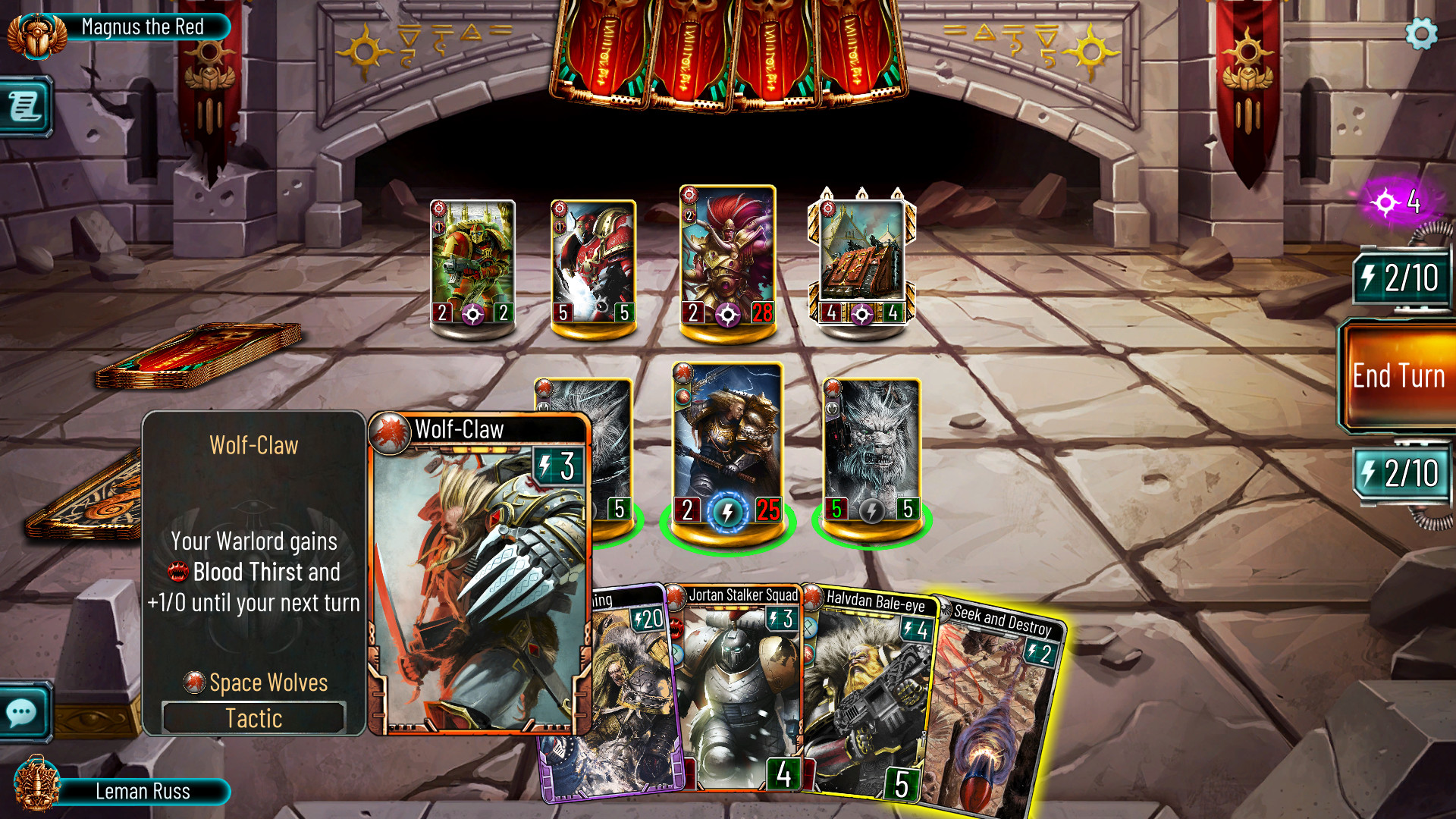
If you prefer the Horus Heresy (the 30K prequel setting of Warhammer) and a slightly more established title, The Horus Heresy: Legions is another excellent card game option. Legions (by the same developer as Warpforge) has been around for a few years and is set during the civil war between Space Marine Legions.
It’s often recommended for its rich selection of Warlords and cards drawn from Black Library lore. In fact, some of the lessons from Legions have carried into Warpforge, but Legions remains active and is a great choice if you love that specific era of Warhammer history. It’s essentially the predecessor to Warpforge, and many Horus Heresy characters and tactics are available there.
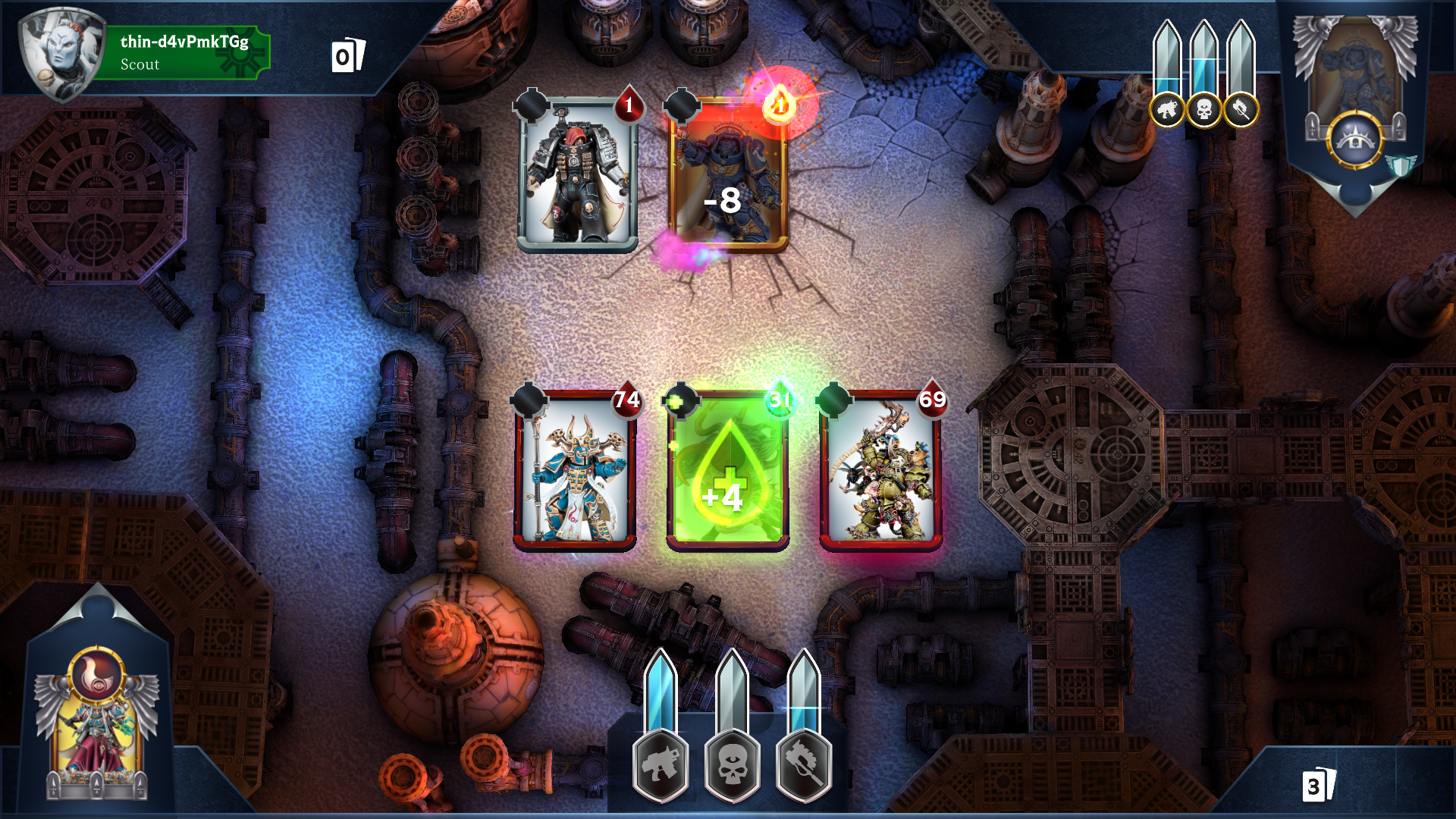
There’s also Warhammer Combat Cards, a mobile card game that’s a bit more casual and unique. It’s based on the old physical card game where cards depict Citadel miniatures. In Combat Cards, you build a small deck of unit cards and engage in battles using a rock-paper-scissors style system (melee beats one type, psychic beats another, etc.).
It features actual photos of painted Warhammer models on the cards, which can be a plus for hobby enthusiasts or a minus if you prefer art. Combat Cards is easy to pick up and has a steady drip of new seasons and challenges, but it’s less of a traditional CCG and more of a quick tactics game with cards.
In summary, Warpforge stands out as the best 40K card game right now for most players, given its modern design, variety, and cross-platform availability (PC and mobile). It brings the factions of 40K to life in a card dueling format with plenty of strategic depth. If your tastes skew toward the Horus Heresy, Legions is a very worthy alternative that has a strong community. And for a lighter card experience, Combat Cards offers some quick fun with a very different style.
Each of these captures a different aspect of Warhammer through cards – whether it’s the grand galactic war, the legendary duel of primarchs, or the simple joy of seeing your miniatures’ stats on a card – so there’s something for every type of card game aficionado in the 40K universe.
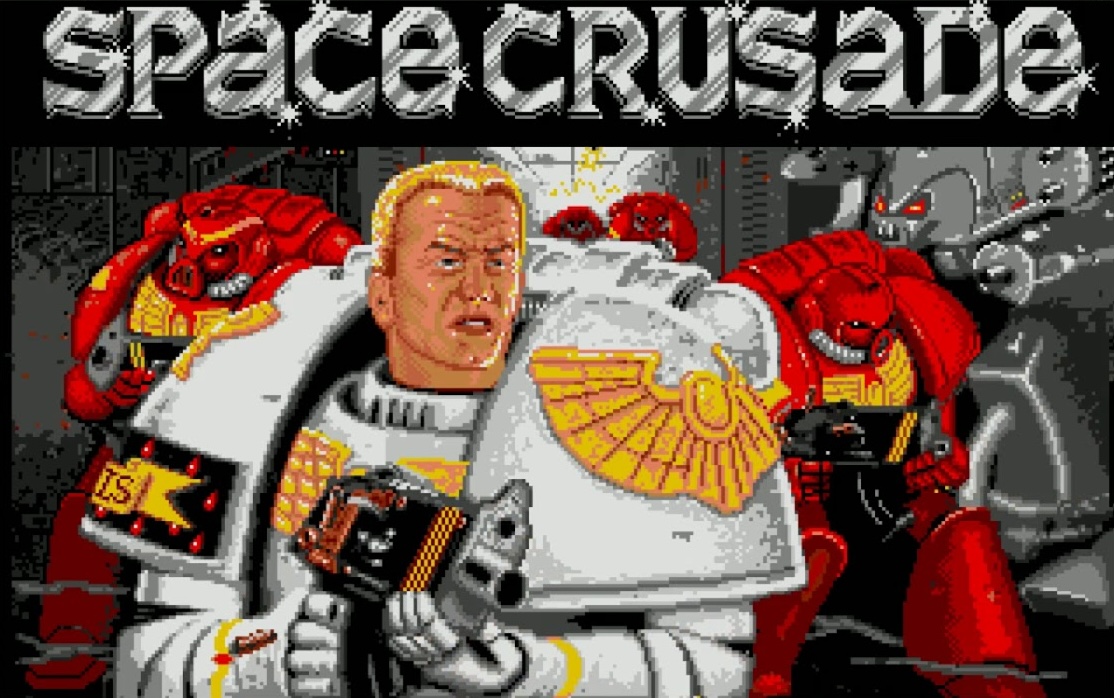
What was the first Warhammer 40K video game?
The honor of the first-ever Warhammer 40K video game goes to Space Crusade, released in the early 1990s (1992 in some regions, 1993 in others) on platforms like the Amiga and DOS PC. Space Crusade was an adaptation of the Milton Bradley/Games Workshop board game of the same name, which itself was a simplified introduction to Warhammer 40K for the board game audience.
In the video game, much like the board game, players controlled squads of Space Marines embarking on missions aboard space hulks, facing off against aliens like Orks, Genestealers, and Chaos androids. It was turn-based and fairly faithful to its source material.
Notably, Space Crusade (the video game) was highly praised at the time of release and even won awards for being a very faithful and fun recreation of the board game experience. It featured some nice conveniences (like a minimap and useful UI indicators) that were innovative for its time, making it a well-regarded title in an era when many board game-to-video game translations were clunky.
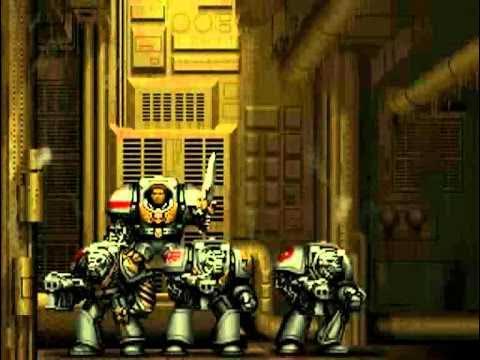
Following Space Crusade, the next major 40K game was Space Hulk in 1993. Space Hulk was based on the titular board game and took a more real-time/first-person approach, which was quite intense – it’s often remembered for its difficulty and the terror of hearing the Genestealers scuttling in the walls. But Space Crusade predates it slightly and is generally considered the very first video game to bring the Warhammer 40,000 universe to our screens.
If we step back and define “Warhammer 40K video game” broadly, Space Crusade indeed holds the title. It’s worth noting that in the 1980s there were some text-based or unofficial games that dabbled in Games Workshop’s universes, but those weren’t 40K-specific or were more toolkit adventures. Space Crusade was the first fully licensed and released game squarely set in Warhammer 40,000’s setting.
It did a commendable job given the technology of the time – featuring isometric tactical maps and even little shooter minigame sequences when battles occurred. However, by today’s standards, it’s of course very dated. The graphics are simple VGA sprites and the sound is rudimentary. That said, it laid the groundwork for everything that followed and proved that the Warhammer 40K IP had legs in the digital realm.
For perspective, this was an era when 40K itself was still relatively young (the tabletop Rogue Trader had launched in 1987). Space Crusade helped introduce many computer gamers to the concept of Space Marines and the 40K universe. As one gaming retrospective quipped, Space Crusade “was the first Warhammer 40K video game and it was great” – though they add, “with an emphasis on the past tense”.
It’s a piece of gaming history now. Without it, we might not have seen the flood of Warhammer titles that came in later decades. So, if you’re ever curious to experience the humble beginnings of 40K video gaming, you can look up Space Crusade via abandonware sites or DOS emulators and see how it all started: with ultramarine-blue pixels taking on alien threats in a turn-based dungeon crawl among the stars.
What’s the most popular Warhammer 40K game?
“Most popular” can be measured in a few ways – by sales numbers, player counts, or enduring fanbase. One game that stands out historically is Warhammer 40,000: Dawn of War (2004), which was a massive hit and brought countless new fans into the universe. Dawn of War sold millions of copies (over 4 million including its expansions by 2009), and it remains highly regarded to this day.
It spawned multiple expansion packs and sequels, and it still has an active modding community. If you ask a long-time Warhammer fan to name the quintessential 40K PC game, Dawn of War is very often the answer, and its presence at the top of many “best of” lists (including this one) reinforces its popularity.
It struck the right chord by capturing the army-scale warfare of 40K in a way that was accessible, cinematic, and fun, which gave it broad appeal beyond just the tabletop crowd. Its critical acclaim combined with strong sales suggest that Dawn of War has a legitimate claim to being the most popular 40K game overall when considering both longevity and total players.
However, in terms of sheer player counts and recent popularity, we have to mention Warhammer 40,000: Darktide (2022) and Warhammer 40,000: Space Marine 2 (2024) as well. Darktide, being a co-op game on Game Pass and Steam, saw a huge surge at launch – it reached over 108,000 concurrent players on Steam at its peak, which is one of the highest peaks ever for a Warhammer title. That indicates an extremely strong popularity in the current gaming landscape (though retention dipped, it’s gradually improving with updates).
Similarly, Space Marine 2 recently made headlines by selling 4.5 million copies in about a month and hitting around 134,000 concurrent players on Steam, a record for a Warhammer game at launch. By comparison, most earlier Warhammer games (even the beloved ones) never had that many people playing all at once, since the PC gaming market itself was smaller back then and they didn’t have multi-platform launches.
So, in the modern context, Space Marine 2 has swiftly become one of the most popular Warhammer games ever in terms of player engagement, and its sales success “changed everything” for its developers – it even prompted Games Workshop to greenlight a Space Marine 3 development immediately.
If we consider the question from a community and cultural impact perspective, Dawn of War might still edge out others because it established a lasting legacy. It’s not uncommon to see Dawn of War memes, quotes, or references in Warhammer forums (“Fresh meat for the grinder!”, “FOR THE EMPEROR!” etc.), and it’s often the gateway game that people recommend. The fact that Dawn of War is still being sold (it’s on Steam, often in the top sellers during sales for RTS games) and still being modded (with projects like the Ultimate Apocalypse mod, etc.) speaks to its enduring popularity.
In summary, historically the most popular Warhammer 40K game is likely Dawn of War (and its expansions) given its sales and lasting fanbase. Recently, Space Marine 2 has stormed onto the scene with record-breaking numbers, indicating that Warhammer’s popularity is at an all-time high in the mainstream gaming sphere.
It’s also worth noting Warhammer 40K’s presence in other genres: for instance, the Total War: Warhammer series is hugely popular, but that’s Warhammer Fantasy, not 40K. Within 40K, no single game had hit the multi-million sales mark as fast as Space Marine 2 did.
Therefore, depending on interpretation: Dawn of War is a safe answer as the most popular overall (especially among core Warhammer PC gamers), whereas Space Marine 2 can be cited as the most popular by current metrics (concurrent players and recent sales success). Both illustrate that Warhammer 40K can produce extremely popular games when done right – whether it’s an RTS classic or a modern action blockbuster, there’s a huge audience ready to dive into the grimdark future.

What are the most anticipated Warhammer 40K games that will be released in the future?
The Warhammer 40K gaming universe is constantly expanding, and there are indeed several future titles (or recently announced projects) that have fans excited. One of the biggest announcements in recent times was Warhammer 40,000: Mechanicus II, the sequel to the acclaimed Mechanicus strategy game.
Revealed during the Warhammer Skulls 2024 event, Mechanicus II promises to feature two full campaigns – one focusing on the Adeptus Mechanicus Tech-Priests and another on their newfound enemies, the Necrons led by Vargard Nefersha. It’s set to expand on the turn-based tactical formula with new environmental mechanics and, presumably, even more units and customization.
Given how well the first game captured the AdMech vibe, the prospect of a sequel has strategy fans and lore buffs alike very excited. No release date has been set as of now, but knowing it’s in development (with Bulwark Studios returning) is enough to put it high on the anticipation list.
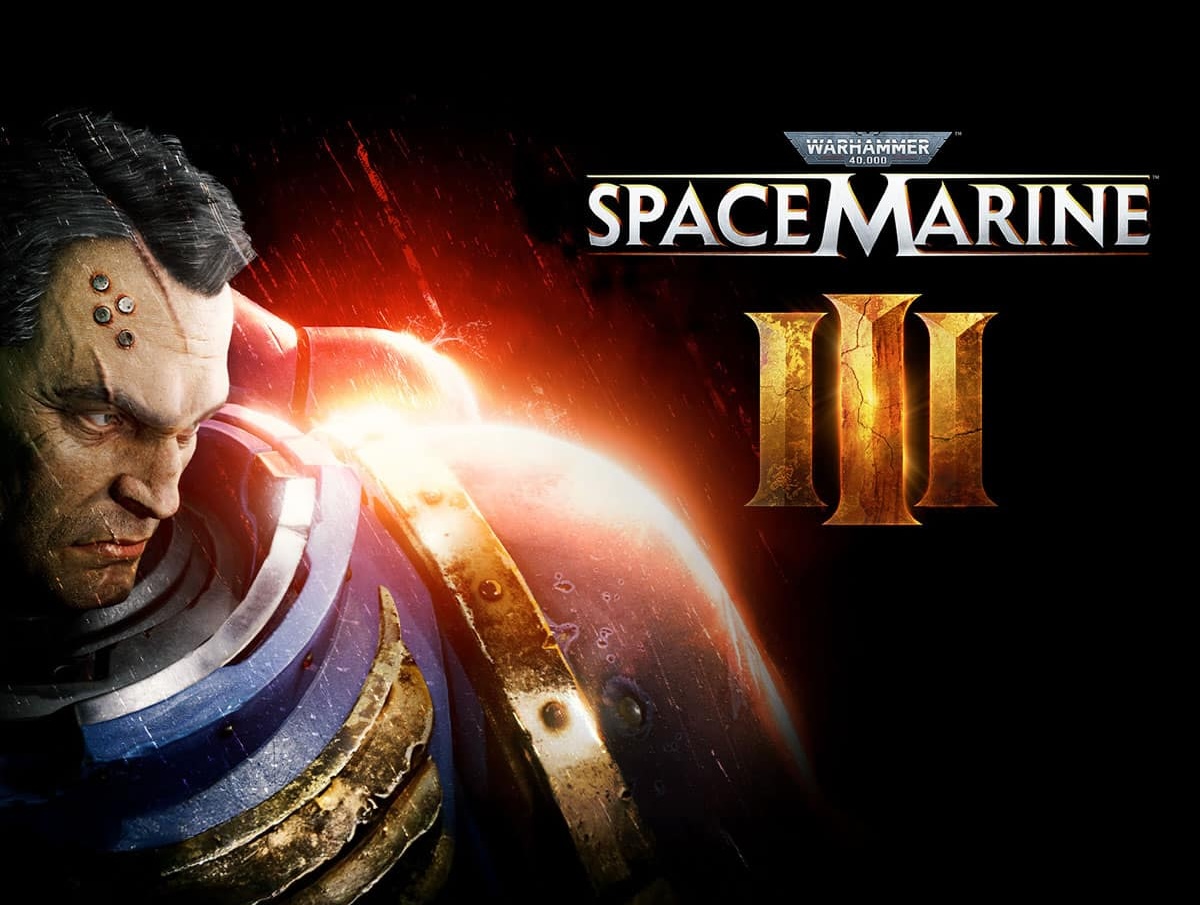
On the horizon, there’s growing excitement about the future of the Space Marine franchise. With the huge success of Space Marine 2, Games Workshop and the developers have officially confirmed that Warhammer 40,000: Space Marine 3 is now in development, though no release date has yet been announced.
Following Space Marine 2’s impressive launch, developers expressed clear interest in continuing Lieutenant Titus’s epic journey, hinting that players might expect even bigger battles, fresh storylines, and new formidable enemies. While details remain scarce and a trailer has yet to surface, speculation is already rampant among fans eager to see what’s next—perhaps another clash with the Forces of Chaos, or an intense campaign featuring other popular xenos foes like Orks or Necrons.
Given how Space Marine 2 raised expectations, the announcement of Space Marine 3 places it among the most eagerly anticipated upcoming releases within the Warhammer 40K gaming community. Fans are keeping a close eye on future reveals, ready for another epic chapter in the ongoing saga of Lieutenant Titus.
In summary, the most anticipated upcoming 40K games include:
-
Space Marine 3 – given the promise of continuing a very successful action series, this looms large in the minds of many gamers.
-
Mechanicus II – for strategy fans, this is a top anticipated title, aiming to deliver more turn-based AdMech vs Necron goodness.
-
Additionally, any new content for existing hits (like future Darktide expansions or Rogue Trader DLC) and unannounced projects that might get revealed at the next Skulls event also keep the anticipation high. Games Workshop has been very active in licensing, so fans are always speculating about the next genre to be tackled – a grand strategy 4X (Gladius was one, but maybe a bigger-budget one?), a full-fledged MMO (there was Eternal Crusade attempt, perhaps someday revisited), or even something like a Battle Royale or a fighting game with 40K characters could theoretically happen.
What’s certain is that the Warhammer 40K gaming landscape is rich and ever-expanding. Each year brings a few new titles, and after the banner year that saw Space Marine 2, Boltgun, Rogue Trader, etc., the community is eager to see how the momentum continues.
Keep an eye on official Warhammer community news – the Skulls showcase each summer is where many future projects get revealed. As of now, though, Mechanicus II and the mere notion of Space Marine 3 have plenty of folks already saving their thrones (and gearing up their PCs or consoles) in anticipation for the next big battles in the 41st millennium.

